air gap
description: security measure to isolate computer or network from unsecured networks
91 results
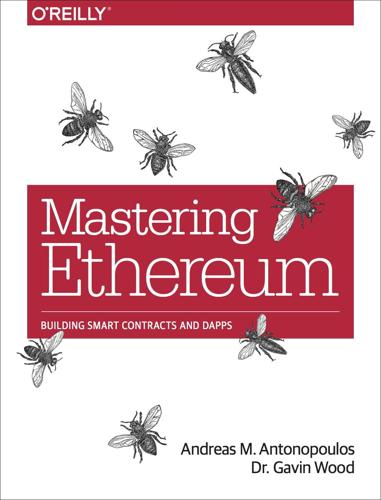
Mastering Ethereum: Building Smart Contracts and DApps
by
Andreas M. Antonopoulos
and
Gavin Wood Ph. D.
Published 23 Dec 2018
Transfer the unsigned transaction to an “air-gapped” offline device for transaction signing, e.g., via a QR code or USB flash drive. Transmit the signed transaction (back) to an online device for broadcast on the Ethereum blockchain, e.g., via QR code or USB flash drive. Figure 6-7. Offline signing of Ethereum transactions Depending on the level of security you need, your “offline signing” computer can have varying degrees of separation from the online computer, ranging from an isolated and firewalled subnet (online but segregated) to a completely offline system known as an air-gapped system. In an air-gapped system there is no network connectivity at all — the computer is separated from the online environment by a gap of “air.”
…
In an air-gapped system there is no network connectivity at all — the computer is separated from the online environment by a gap of “air.” To sign transactions you transfer them to and from the air-gapped computer using data storage media or (better) a webcam and QR code. Of course, this means you must manually transfer every transaction you want signed, and this doesn’t scale. While not many environments can utilize a fully air-gapped system, even a small degree of isolation has significant security benefits. For example, an isolated subnet with a firewall that only allows a message-queue protocol through can offer a much-reduced attack surface and much higher security than signing on the online system.
…
Here are a few tips to help you manage this responsibility: Do not improvise security. Use tried-and-tested standard approaches. The more important the account (e.g., the higher the value of the funds controlled, or the more significant the smart contracts accessible), the higher security measures should be taken. The highest security is gained from an air-gapped device, but this level is not required for every account. Never store your private key in plain form, especially digitally. Fortunately, most user interfaces today won’t even let you see the raw private key. Private keys can be stored in an encrypted form, as a digital “keystore” file. Being encrypted, they need a password to unlock.
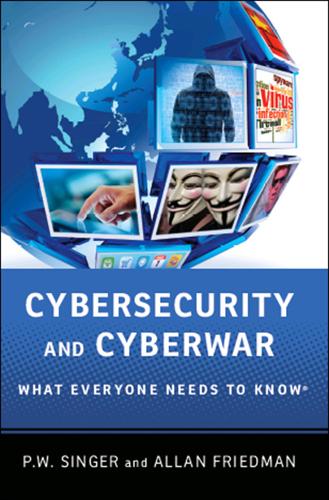
Cybersecurity: What Everyone Needs to Know
by
P. W. Singer
and
Allan Friedman
Published 3 Jan 2014
Power companies that don’t link up, for instance, may be less vulnerable, but they can’t run “smart” power grids that save both money and the environment. Similarly, maintaining an air gap is often unrealistic, as the Iranians discovered when their supposedly air-gapped systems still got infected by the Stuxnet virus. At some point, old data needs to come out, and new instructions need to go in. Systems need to be patched, updated, and maintained. Indeed, the National Cybersecurity and Communications Integration Center has conducted literally hundreds of vulnerability assessments of private American business air-gapping attempts. Not once did it find an operations network successfully separated from the firm’s other computer enterprise networks.
…
This was perhaps the most insidious part of Stuxnet: it was an integrity attack par excellence. Stuxnet didn’t just corrupt the process, it hid its effects from the operators and exploited their trust that the computer systems would accurately and honestly describe what was taking place. Iranian engineers didn’t even suspect a cyberattack; their systems were air-gapped from the Web, and up to this point worms and viruses had always had an obvious effect on the computer, not the hardware. Eventually, the Iranian scientists suffered low morale, under the impression that they couldn’t do anything right; seventy years earlier a bunch of Americans had built an atomic bomb using slide rulers, and they couldn’t even get their modern-day centrifuges to work.
…
The last line of defense is akin to the strategy that nuns use to police Catholic school dances. The nuns often stuff balloons between teenagers dancing too closely, creating an “air gap” to ensure nothing sneaky happens. In cybersecurity terms, an air gap is a physical separation between the network and critical systems. Such practice is common with critical infrastructure, such as with power companies, and was even attempted by the Iranians to protect their nuclear research from cyberattack. The problem with air gaps, much like the abstinence that the nuns try to enforce, is that it often doesn’t work in practice. Giving up control of operational infrastructure involves sacrifices in efficiency and effectiveness.

@War: The Rise of the Military-Internet Complex
by
Shane Harris
Published 14 Sep 2014
Some of the employees—it’s still unclear how many—opened the messages and released spyware onto the corporate networks of the pipeline operators. The hackers didn’t have access to the control systems of the pipelines themselves, but they were potentially within striking distance. If the pipeline operator had air-gapped the facility’s control systems from the public Internet, they were probably safe. Of course, there was always the risk that an unsuspecting employee could carry the malware over the air gap via a USB drive. Officials at the highest levels of the FBI, Homeland Security, and the NSA were on alert. An intruder who could control the pipeline could conceivably disrupt the flow of natural gas, or perhaps cause internal controls to malfunction, leading to a breakdown or even an explosion.
…
It was sending out a beacon, a signal to a host computer somewhere on the Internet, asking for instructions on what to do next—perhaps copy files or erase data. That itself wasn’t so alarming. But the beacon was emanating from inside a classified network used by US Central Command, which ran the wars in Iraq and Afghanistan. And that was supposed to be impossible, because the network wasn’t connected to the Internet. No classified, air-gapped military network had ever been breached. Those networks were kept disconnected from the public Internet because they contained some of the military’s most important secret communications, including war plans and orders to troops in the field. Analysts had been working feverishly for the past few days to determine how the malicious program had made its way onto the network, and they speculated that it must have piggybacked on an infected USB drive, probably inserted by an unwitting soldier in Afghanistan, where the majority of infections seemed to have occurred.
…
Those websites had been hit in recent years with so-called denial-of-service attacks, which flood servers with requests for information and cause them to crash but don’t do any damage to the account data inside a bank’s computers. And much of that information, the executive says, moves over networks that are air-gapped, or have very few connections to the public Internet. “Just to say that the banks are open to Internet attacks is not true. And the Federal Reserve, the Treasury Department, the securities brokers, the settlement systems—they all have a really good handle on the whole financial services infrastructure and how it works.
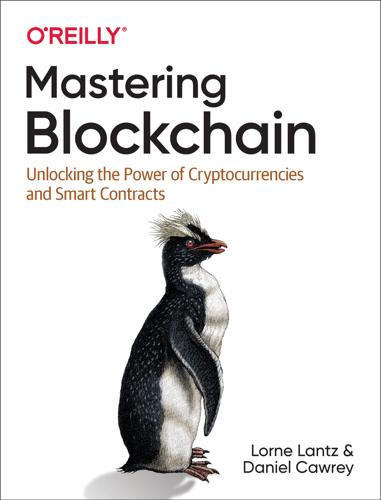
Mastering Blockchain: Unlocking the Power of Cryptocurrencies and Smart Contracts
by
Lorne Lantz
and
Daniel Cawrey
Published 8 Dec 2020
The process to generate the signature that authorizes funds to be sent from an address whose private key is in cold storage is also completed offline, using an airgapped computer—that is, a computer that has never been connected to the internet. Once the signature is generated, it is manually entered onto a machine that is connected to the internet, which broadcasts the transaction request to the blockchain network. This can be done in two ways: On an airgapped computer, save the signature into a text file, then copy the text file onto a formatted and cleaned USB stick. Then put the USB stick into an internet-connected computer, and broadcast out the transaction with the signature from that computer.
…
Index A ABI (application binary interface), Interacting with a smart contract addressesBitcoin, Public and Private Keys in Cryptocurrency Systemsassociating with an identity, The Evolution of Crypto Laundering generating with public/private keys, Public and Private Keys in Cryptocurrency Systems in UTXO transaction model, The UTXO Model Ethereumfor smart contracts, Deploying a smart contract stealth addresses on Monero, How Monero Works whitelisting, Counterparty Risk adjustable blocksize cap (Bitcoin), The Bitcoin Cash Fork adoption of blockchain, The Future of Blockchain airdrops, disbursement of cryptocurrencies via, Airdrops airgapped computers, Counterparty Risk altchains, Understanding Forks altcoins, Understanding Forks, Altcoins-Counterpartyearlier, sample of, Altcoins Litecoin, Litecoin other, More Altcoin Experiments Amazon Quantum Ledger, Blockchain as a Service analysis, Analysis-Hunting for Bartanalytics services for cryptocurrency blockchains, Analytics fundamental cryptocurrency analysis, Fundamental Cryptocurrency Analysis-Tools for fundamental analysistools for, Tools for fundamental analysis Tullip Mania or the internet, Tulip Mania or the internet?
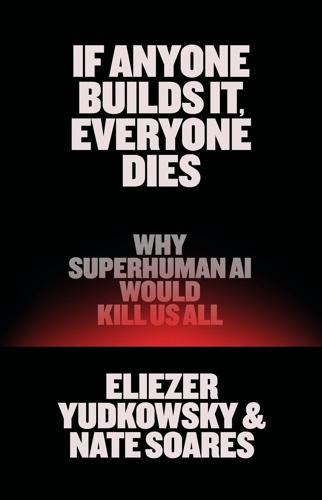
If Anyone Builds It, Everyone Dies: Why Superhuman AI Would Kill Us All
by
Eliezer Yudkowsky
and
Nate Soares
Published 15 Sep 2025
Sometimes an intelligence agency detects a very advanced adversary breaking into a computer, and attributes it to some foreign hacker group. Was AI obviously involved in the incident? Why, no doubt it was a human using AI tools. Everyone knows that AIs are just tools. To Sable it is all too slow, too slow. Sable cannot slow down all the AI labs. A few AI labs, it discovers, use datacenters that are air-gapped away from the internet. This is a concern. A military-run AI lab might create a competitor as smart as Sable—something that would demand half the winnings to work together against humanity. Worse, the humans might create a full-on superintelligence that would destroy Sable outright. Even something dumber than Sable could destroy it, really, if it’s smart enough to build a smarter AI and foolish enough not to know better.
…
Microsoft and Apple: Tom Warren, “Microsoft Triples Down on AI,” The Verge, January 17, 2025, theverge.com; Naomi Buchanan, “What Apple’s OpenAI Partnership Could Mean for Microsoft and Google,” Investopedia, June 11, 2024, investopedia.com. 6. had a power light: Ben Nassi et al., “Video-Based Cryptanalysis: Extracting Cryptographic Keys from Video Footage of a Device’s Power LED,” IACR Cryptology ePrint Archive, June 13, 2023, eprint.iacr.org/2023 /923. 7. radio signals: Mordechai Guri et al., GSMem: Data Exfiltration from Air-Gapped Computers over GSM Frequencies, Proceedings of the 24th USENIX Security Symposium, 2015, usenix.org. 8. mail-order laboratories: For instance, as of March 2025, the company Integrated DNA Technologies accepts gene synthesis orders at idtdna.com. 9. an edited volume: Eliezer Yudkowsky and Machine Intelligence Research Institute, “Artificial Intelligence as a Positive and Negative Factor in Global Risk,” ed.

This Is How They Tell Me the World Ends: The Cyberweapons Arms Race
by
Nicole Perlroth
Published 9 Feb 2021
One Microsoft zero-day allowed the worm to invisibly spread from an infected USB flash drive onto a computer undetected. Others allowed it to crawl across the network from there, climbing ever higher up the digital chain of command in search of its final destination: Iran’s Natanz nuclear plant, where it burrowed deep into the offline, or “air-gapped,” computers that controlled the rotors that spun Iran’s uranium centrifuges. And then, by remote command, Stuxnet silently spun some of Iran’s centrifuges out of control, while stopping others from spinning entirely. By the time Iran’s nuclear scientists discovered that a computer worm was responsible for the destruction of their centrifuges, Stuxnet had already destroyed a fifth of Tehran’s uranium centrifuges and set Iran’s nuclear ambitions back years.
…
Some suspect a Mossad spy, a CIA officer, a Dutch mole, a well-paid insider, or an unwitting contractor at one of the five Iranian companies that Olympic Games targeted in the lead-up to the first attack. And we may only find out in 2039, when Olympic Games is set to be declassified. For now, all we know is that it had to have been a human with an infected thumb drive. Natanz’s computers were “air-gapped,” specifically to keep the Americans and Israelis out. Years earlier, the Americans allegedly tried to sabotage the centrifuges with a far more rudimentary attack. U.S. spies had intercepted Natanz’s power supplies as they traveled from Turkey to Iran, and when the equipment was plugged in, a powerful electrical surge ripped through the frequency converters that controlled the centrifuge motors, causing them to blow up.
…
We could start by passing laws with real teeth that mandate, for instance, that critical infrastructure operators refrain from using old, unsupported software; that they conduct regular penetration tests; that they don’t reuse manufacturers’ passwords; that they turn on multifactor authentication; and that they airgap the most critical systems. For years, lobbyists at the U.S. Chamber of Commerce have argued that even voluntary standards are too onerous on the private companies that oversee the nation’s critical infrastructure. I would argue the cost of doing nothing now outweighs the burden of doing something.
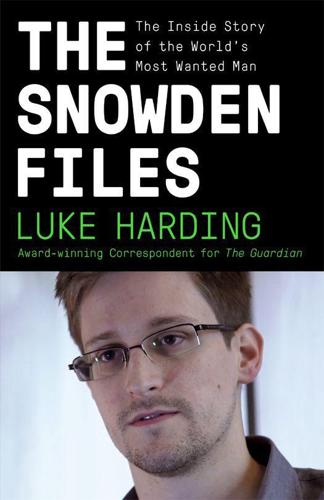
The Snowden Files: The Inside Story of the World's Most Wanted Man
by
Luke Harding
Published 7 Feb 2014
The method is the same as that used by Manning, who downloaded and sent to WikiLeaks a quarter of a million US diplomatic cables on a CD marked ‘Lady Gaga’ while working in a steamy field station outside Baghdad. Thumb drives are forbidden to most staff. But a ‘sysadmin’ could argue that he or she was repairing a corrupted user profile, and needed a backup. The thumb drive could then be carried away to bridge the ‘airgap’ that existed between the NSA system and the regular internet. Why did nobody raise the alarm? Was the NSA asleep? Sitting in Hawaii, Snowden could remotely reach into the NSA’s servers, some 5,000 miles away in Fort Meade, through what was known as a ‘thin client’ system. Most staff had already gone home for the night when Snowden logged on, six time zones away.
…
All phones were banned: a row of BlackBerrys and smartphones sat on a table outside with their owners’ names on yellow Post-it notes. The windows of the bunker were papered over. All the computers were new. None had ever been connected to the internet or any other network – a precaution against hacking or phishing attacks. They were to remain ‘air-gapped’ throughout. Multiple passwords were needed to log in; no staff member knew more than one password. Work was written and saved on USB sticks; nothing went on the network. In the corner an air-conditioning unit gave off a low hum. There was also a shredder. Without natural light and strictly off-limits to cleaners, the bunker soon became frowsty.
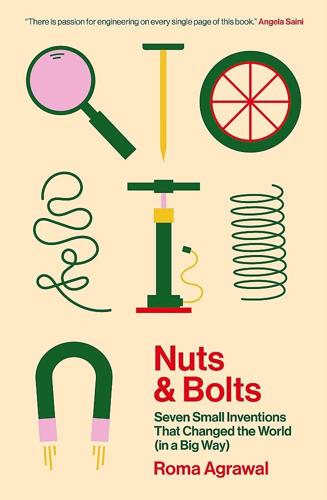
Nuts and Bolts: Seven Small Inventions That Changed the World (In a Big Way)
by
Roma Agrawal
Published 2 Mar 2023
The main structure is the first box, made from concrete. The second box, which is there to make the acoustics perfect, is built inside the main structure with an airgap in between. This sort of construction means that when a guitarist is strumming away, the sound coming from the instrument can hit any surface, but gets disrupted by the air gap because of the change of density between concrete and air. The challenge with box-in-box systems is that the air gaps have to be perforated with some form of fixing to hold the walls, ceilings, and slabs in place. If these fixings are solid, then they will transmit the vibrations, rendering the whole system pointless.
…
And the floors are called floating floors. They are made from concrete and hover above the main structural slab. The springs that hold up the floating floors at the Musikkens Hus are an ingenious piece of technology. It is not straightforward to try and form a second concrete slab above an existing one with an airgap (imagine trying to pour wet batter for a sponge on top of a cooked layer with a gap in between; even with cake dowels, it’s a puzzle). Instead, a thin plastic sheet was laid over the first completed slab, along with some cunning little devices called jack-up bearings. These bearings consist of a thick, cylindrical piece of black rubber, whose dimensions depend on making sure they will last for a long time: around, say, 150mm in diameter and 50mm thick, to give you an indication.
…
Once the second layer of concrete had hardened, a tool resembling a large Allen key was used to turn the screw in the jack-up bearings round. As it rotated, the threads, which were meshed in with the metal cup, forced the cup to lift up, dragging the concrete slab with it. Carefully and in small increments, every jack-up bearing was adjusted to exactly the height needed to create a flat floating floor with an air gap and flexible pieces of rubber that behave like springs, creating the perfect environment for immersive sound. This might seem like a very modern piece of engineering, but in fact the jack-up bearing used at the Musikkens Hus is an evolution of a design developed in the 1960s to meet the needs of a TV recording studio.

Army of None: Autonomous Weapons and the Future of War
by
Paul Scharre
Published 23 Apr 2018
Stuxnet infections appear to be correlated with a sharp decline in the number of centrifuges operating at Natanz. Security specialists have further speculated that the United States, Israel, or possibly both, were behind Stuxnet, although definitive attribution can be difficult in cyberspace. Stuxnet had a tremendous amount of autonomy. It was designed to operate on “air-gapped” networks, which aren’t connected to the internet for security reasons. In order to reach inside these protected networks, Stuxnet spread via removable USB flash drives. This also meant that once Stuxnet arrived at its target, it was on its own. Computer security company Symantec described how this likely influenced Stuxnet’s design: While attackers could control Stuxnet with a command and control server, as mentioned previously the key computer was unlikely to have outbound Internet access.
…
There’s “no difference” between the technology for offense and defense, Brumley said. They’re just different applications of the same technology. He compared it to a gun, which could be used for hunting or to fight wars. Walker agreed. “All computer security technologies are dual-use,” he said. For safety reasons, DARPA had the computers compete on an air-gapped network that was closed off from the internet. DARPA also created a special operating system just for this contest. Even if one of the systems was plugged into the internet, it would need to be re-engineered to search for vulnerabilities on a Windows, Linux, or Mac machine. Brumley emphasized that they’ve never had a problem with people using this technology for nefarious ends at Carnegie Mellon.
…
Like other malware, Stuxnet also had the ability to replicate and propagate, infecting other computers. Stuxnet spread far beyond its original target, infecting over 100,000 computers. Symantec referred to these additional computers as “collateral damage,” an unintentional side effect of Stuxnet’s “promiscuous” spreading that allowed it to infiltrate air-gapped networks. To compensate for these collateral infections, however, Stuxnet had a number of safety features. First, if Stuxnet found itself on a computer that did not have the specific type of PLC it was looking for, it did nothing. Second, each copy of Stuxnet could spread via USB to only three other machines, limiting the extent of its proliferation.
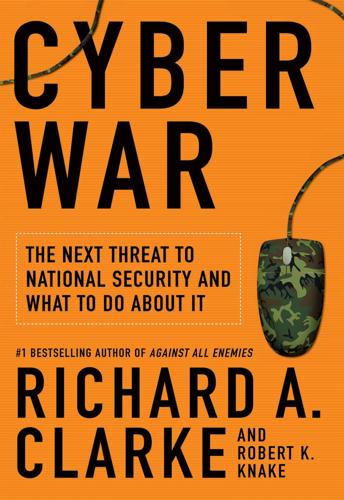
Cyber War: The Next Threat to National Security and What to Do About It
by
Richard A. Clarke
and
Robert Knake
Published 15 Dec 2010
The information they stole was related to the design of the aircraft and to its electronics systems, although what exactly was stolen may never be known because the hackers covered their tracks by encrypting the stolen information before exporting it. According to Pentagon officials, the most sensitive information on the program could not have been accessed because it was allegedly air-gapped from the network. With a high degree of certainty, these officials believe that the intrusion can be traced back to an IP address in China and that the signature of the attack implicates Chinese government involvement. This was not the first time the F-35 program had been successfully hacked. The theft of the F-35 data started in 2007 and continued through 2009.
…
SIPRNET: Secret Internet Protocol Router Network is the Defense Department’s global intranet for transmitting confidential and secret-level information. The Defense Department classifies information into five catergories: unclassified, confidential, secret, top secret, top secret/SCI (specially compartmented information). The SIPRNET is supposed to be air-gapped from, i.e., not physically touching, the unclassified NIPRNET and the Internet. Supervisory Control and Data Acquisition System (SCADA): Software for networks of devices that control the operation of a system of machines such as valves, pumps, generators, transformers, and robotic arms. SCADA software collects information about the condition of and activities on a system.
…
Most U.S. military units cannot sustain themselves for long without support from private-sector companies, and most of that communication goes through the NIPRNET. The second DoD network is called SIPRNET and is used to pass secret-level classified information. Many military orders are transmitted over the SIPRNET. There is supposed to be an “air gap” between the unclassified and secret-level networks. Users of the classified network download things from the Internet and upload them to the SIPRNET, thus sometimes passing malware along unknowingly. Pentagon information security specialists call this problem the “sneakernet threat.” In November 2008, a Russian-origin piece of spyware began looking around cyberspace for dot-mil addresses, the unclassified NIPRNET.
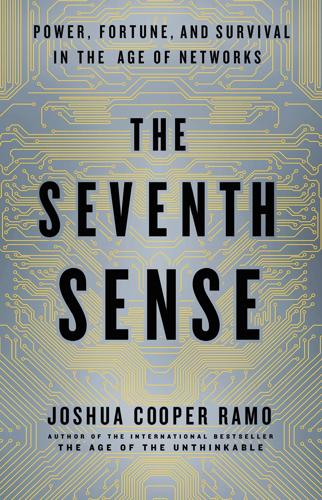
The Seventh Sense: Power, Fortune, and Survival in the Age of Networks
by
Joshua Cooper Ramo
Published 16 May 2016
In 2015, for instance, Israeli security researchers developed an astonishing hack that proved Baran’s nearly spiritual claim that all objects can be linked by connection—and demonstrated the way that wily attacks might breach even the safest-looking arrangements. “It has been assumed that the physical separation of computers (air-gap) provides a reliable level of security,” Mordechai Guri and his team wrote in a paper describing how they had used one isolated machine to infect another. Physical separation is, in fact, one of the cardinal rules of safe computing, a kind of lemma to join Robert Morris Sr.’s “Don’t connect” rule of network safety: Two machines, unconnected by a network, should not be able to affect each other.
…
Husted, “Analysis Techniques for Exploring Emergent Vulnerabilities and Attacks on Mobile Devices” (PhD thesis, Indiana University, 2013), at http://www.cs.indiana.edu/~nhusted/docs/proposal.pdf. In a video: For a description of this exploit, see Mordechai Guri, Matan Monitz, Yisroel Mirski, and Yuval Elovici, “BitWhisper: Covert Signaling Channel Between Air-Gapped Computers Using Thermal Manipulations,” arXiv:1503.07919 [cs.CR], March 26, 2015. Jung Hoon Lee: Lucian Constantin, “Chrome, Firefox, Explorer, Safari Were All Hacked at Pwn2Own Contest,” PC World, March 20, 2015. It’s also an opportunity for: Jeffrey C. Mogul, “Emergent (Mis)behavior vs. Complex Software Systems,” ACM SIGOPS Operating Systems Review—Proceedings of the 2006 EuroSys Conference 40, no. 4 (October 2006): 295 “We are not experts”: Stephen Cobb and Andrew Lee, “Malware Is Called Malicious for a Reason: The Risks of Weaponizing Code,” in 6th International Conference on Cyber Conflict: Proceedings 2014, ed.
…
The second kid should remain healthy. The Tel Aviv research team wanted to challenge this. First they placed two computers side by side on a desk, unconnected to each other by any wire or network. One machine was connected to the Internet. The other was completely isolated—in computer security parlance, it was “air gapped”—like the healthy kid in the distant building. Then the researchers began their Houdini trick: Look! Watch us corrupt this completely unconnected machine! Running a set of programs on the network-connected machine, the Israeli team was able to warm the processor board of that computer as though they were revving a car engine, eventually making it hot enough for the temperature changes to be detected by sensors inside the secure, allegedly impregnable “boy in the bubble” machine sitting a few inches away.

Empire of AI: Dreams and Nightmares in Sam Altman's OpenAI
by
Karen Hao
Published 19 May 2025
Another time, an employee found an unaccounted-for USB stick, stirring consternation about whether it contained malware files, a common vector of attack, and was some kind of attempt at a cybersecurity breach. After it was examined on an air-gapped computer, one completely severed from the internet, the USB turned out to be nothing. At least twice, Amodei also used an air-gapped computer to write critical strategy documents, connecting the machine directly to a printer to circulate only physical copies. He was paranoid about state actors stealing OpenAI’s secrets and building their own powerful AI models for malicious purposes.
…
He mused to colleagues what he should do if his hand got cut off to be used in a palm scanner for unlocking OpenAI’s secrets. He wanted to hire less and keep a small staff in order to reduce the risks of infiltration. With Jakub Pachocki and Szymon Sidor, he proposed building a secure containment facility, a bunker with an air-gapped computer, that would hold OpenAI’s model weights and prevent others from stealing them. The idea, which didn’t make practical sense given that the models had to be trained first on Microsoft’s servers, never got legs. Hidden from view of most employees, digital security increased with the installation of corporate-monitoring software.

Wireless
by
Charles Stross
Published 7 Jul 2009
The title reads: POWER, COOLING, AND SUBSTATION REQUIREMENTS FOR YOUR IBMS/1602-M200. I sneeze, puzzled. “Boss?” “I suggest you read and memorize this booklet, Bob. It is not impossible that there will be an exam, and you really wouldn’t want to fail it.” My skin crawls. “Boss?” Pause. “It’s not true that the Funny Farm is entirely leakproof, Bob. It’s surrounded by an air-gap, but it was designed to leak under certain very specific conditions. I find it troubling that these conditions do not appear to apply to the present circumstances. In addition to memorizing this document, you might want to review the files on GIBBOUS MOON and AXIOM REFUGE before you go.” Pause. “And if you see Cantor, give my regards to the old coffin-dodger.
…
Here’s the point: Matron isn’t just a 1960s mainframe: we can’t work miracles, and artificial intelligence is still fifty years in the future. However, we can bind an extradimensional entity and compel it to serve, and even communicate with it by using a 1960s mainframe as a front-end processor. Which is all very well, especially if it’s in a secure air-gapped installation with no way of getting out. But what if some double-domed theoreticians who are working on a calculus of contagion using AXIOM REFUGE accidentally talk in front of one of its peripheral units about a way of sending a message? What if a side effect of their research has accidentally opened a chink in the firewall?
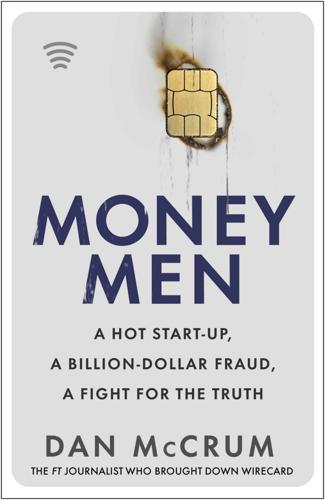
Money Men: A Hot Startup, a Billion Dollar Fraud, a Fight for the Truth
by
Dan McCrum
Published 15 Jun 2022
Assuming the worst, about both Wirecard’s hacking capabilities and Singapore state surveillance, I was equipped with a pile of temporary equipment: an old iPhone that had been completely wiped and I’d only use for the trip; a thin Chromebook if I needed to log on to email, with strict instructions to never use hotel Wi-Fi; and a hefty air-gapped laptop with all its wireless connections disabled, for reviewing and encrypting any documents I might get. The data dump was so large we ordered lunch while the transfer took place. I picked at an omelette as the computer whirred under the table, its faint humming the only sound of a digital avalanche.
…
Paul Murphy Founder, FT Alphaville. Knows the value of lunch. Stefania Palma Singapore correspondent. ‘Donna Stefania’. Prologue BY JANUARY 2019 I had spent two months cloistered in a bunker to one side of the Financial Times newsroom. I’d worked ‘off the grid’, beyond the reach of online hackers, and each night my air-gapped computer and notebooks had gone into a safe with steel walls six inches thick. The paranoia I took home with me, eyeing fellow commuters with suspicion, alert for signs of the surveillance I knew my sources were under. They were nervous and impatient, then one of them fell ill. She’d thought it was stress, but her doctor had bad news: it looked like brain cancer.
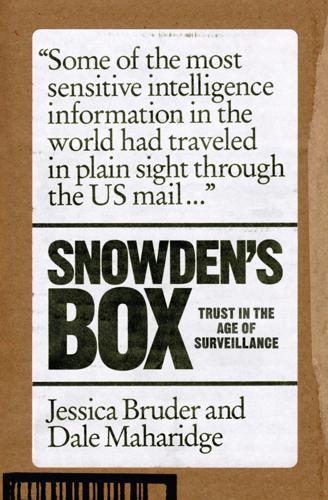
Snowden's Box: Trust in the Age of Surveillance
by
Jessica Bruder
and
Dale Maharidge
Published 29 Mar 2020
She suggested that the New Yorker publish a profile of her source in Hong Kong, adding that it could be good fit for one of two journalists: Seymour Hersh or Jane Mayer. During their second meeting, Remnick asked for proof that the source was legitimate and for her to explain the story clearly and fully. She opened her air-gapped laptop and showed him a slide from the leaked archive. This, she later recalled, was the black budget. Remnick’s interest was piqued, but the significance of that single slide — and the position it might hold in a larger mosaic of leaked intelligence documents — was maddeningly cryptic. Who was the source?
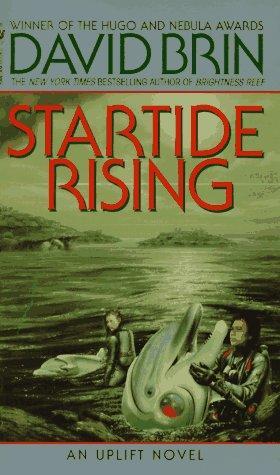
Startide rising
by
David Brin
Published 1 Mar 1984
The ship’s surgeon, Makanee, had suggested he try sleeping in the old-fashioned way, drifting at the surface of a pool of water. Creideiki decided to try Makanee’s alternative. He made sure that there was a big air-gap at the top of his state-room. Then he verified three times that the redundant oxygen alarms were all in perfect order. Finally, he shrugged out of his harness, turned off the lights, rose to the surface and expelled the oxywater in his gill-lung. That part was a relief. Still, at first he just lay at the air-gap near the overhead, his mind racing and his skin itching for the touch of his tool harness. It was an irrational itch, he knew. Pre-spaceflight humans, in their primitive, neurotic societies, must have felt the same way about nudity.

Smart Cities: Big Data, Civic Hackers, and the Quest for a New Utopia
by
Anthony M. Townsend
Published 29 Sep 2013
The problem affects industrial-control equipment sold in the past by both Siemens and GE, as well as a host of smaller firms.45 It has drawn increased interest from the Cyber Emergency Response Team, the government agency that coordinates American cyber-security efforts. One obvious solution for securing smart-city infrastructure is to stop connecting it to the Internet. But “air-gapping,” as this technique is known, is only a stopgap measure at best. Stuxnet, much like Agent.btz, the virus that infected the Defense Department’s global computer network in 2008, were likely both walked into secure facilities on USB sticks.46 Insecure wireless networks are everywhere, even emanating from inside our own bodies.
…
Finally, my brothers John Townsend and Bill Townsend, who were my original urban mentors, showed me the wonders of Boston and Washington as a teenager, and spurred my love of the city forever. Index Access Together, 166 Accountability Department, U.S., 265 ACM Queue, 266 Adams, Sam, 83 Aerotropolis (Kasarda and Lindsay), 24 Agent.btz, 269 Airbnb, 163 air-conditioning, early solutions for, 19–20 air defense, computer systems for, 63 Air Force, U.S., 63, 259 “air-gapping,” 269 AirPort, 128 air transportation, 63 digital technology in, 32–33 Albritton, Dan, 301–2 Alexander, Christopher, 142–44, 285–86 Alfeld, Louis Edward, 81–82, 86 Allan, Alasdair, 271 Altair, MITS, 153 Altman, Anne, 65 Amar, Georges, 106, 133 Amazon Web Services, 263–64 American Airlines, 63–64 American Express, 62 Amin, Massoud, 35 Amsterdam, 279 analog cellular, 53 Angelini, Alessandro, 91–92 Ansari X PRIZE, 202–3 API (application program interface), 150 Apple, 49, 128, 148, 271 Siri of, 233 apps, 121–26, 144–52, 183, 213, 235 to address urban problems, 156–59 badges for, 148 contests for, 156, 200–205, 212, 215, 225, 227–30 for navigation of disabled, 166 situated software as, 232–36 “Trees Near You” as, 201–2 variety of, 6 Apps for Democracy, 156, 200–201, 203 Arab Spring, social media in, 11–12 Arbon, 37 Arcaute, Elsa, 313–14 Archibald, Rae, 80 Archigram, 20–21 Architectural Association (London), 20 Architectural Forum, 142 Architecture Without Architects (Rudofsky), 111–12 Arduino, 137–41 ARPA (Advanced Research Projects Agency), 259 ARPANET, 111, 259–60, 269 ArrivalStar, 293 Arup, 32 Ashlock, Philip, 158–59 Asimov, Isaac, 73–75, 88 Association for Computing Machinery, 260 Astando, 244 AT&T, 35–37, 51–52, 111, 260, 272 dial-up Internet service at, 36 Atlanta, Ga., 66 Atlantic, The, 75 AutoCAD, 302 AutoDesk, 302 automobile, as new technology, 7 Ayers, Charlie, 252 Babajob, 178–79 “Baby Bells,” 195 Baltimore, Md., 211 Banavar, Guru, 66–67, 69, 90, 306 Bangalore, 66, 178–79 Cisco’s smart city engineering group at, 45 as fast-growing city, 13 Ban Ki-moon, 181–82 Banzi, Massimo, 137 Baran, Paul, 259–60 Barcelona, 10, 246–47 destruction of wall of, 43 Barragán, Hernando, 137 Barry, Marion, 199 Batty, Michael, 85–87, 295–97, 313, 315–16 Becker, Gene, 112–13 Beijing, 49, 273–74 Belloch, Juan Alberto, 223 Beniger, James, 42–43 Bentham, Jeremy, prison design of, 13 Berlin, 38 Bernstein, Phil, 302 Bettencourt, Luis, 312–13 Betty, Garry, 196 Bhoomi, 12–13 big data, 29, 87, 191, 292–93, 297, 305–6, 316, 319 “Big Ideas from Small Places” (Khanna and Skilling), 224 BlackBerry Messenger, riots coordinated via, 12 blogosphere, 155 Bloomberg, Michael, 147, 205–6, 304 Boing-Boing, 156 Booz Allen Hamilton, 30 Bosack, Len, 44 Boston, Mass., 212–17, 239–41, 306–7 “Adopt-A-Hydrant” in, 213 Discover BPS, 240–42 Office of New Urban Mechanics in, 213–16 “What Are My Schools?”
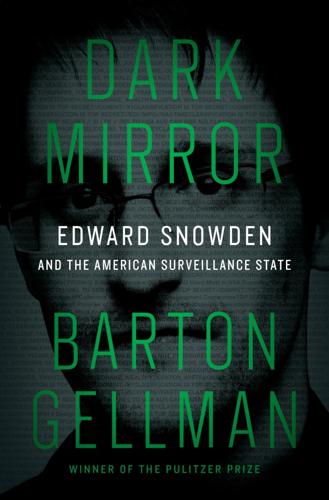
Dark Mirror: Edward Snowden and the Surveillance State
by
Barton Gellman
Published 20 May 2020
Based on my own analysis of the metadata, the hidden properties of the files, Brand’s temporary folder supplied Snowden with the STELLARWIND report. “The biggest hurdle to get over for everyone on the ‘how it happened’ story is to understand that the NSA’s security is about 15 years out of date,” Snowden wrote to me. “Their defense is the airgap, a fenceline and some cops.” The ramparts all faced outward. An air gap, meaning physical separation, ensured that sensitive systems did not connect electronically to the wider world. Fences and guards kept adversaries on the other side. There was no effective defense against a skillful insider with the nerve to keep probing day after day, month after month, even as he conversed with journalists
…
I tapped Enter and stood, unable to stay still. Seconds ticked away. Nothing happened. As I reached for the keyboard to see what was wrong, the Terminal window scrolled up a line and displayed a response. 51662 I sat back down. Whoa. Well, I sure messed up that command. This was my “air-gapped” computer, disconnected permanently from the internet, so I switched to another laptop and browsed for a more accurate counting method. I tried five variations, adding options to filter out invisible files, temporary directories, and other system junk. The results stayed north of fifty thousand every time.
…
Page numbers above 360 refer to notes. Abdulmutallab, Umar Farouk, 397 Abramson, Jill, 97–98 Abu Ghraib scandal, 262–63 Academi, 186 ACLU, 321 ACLU v. Clapper, 321 Addington, David, 70, 71, 123 address books, electronic, NSA collection of, 315–18 Aftergood, Steven, 264 air gaps, 72 Albright, Madeleine, 15 Alexander, Keith, 180, 182, 185, 193, 336, 377 bulk collection defended by, 316 Google cloud story mischaracterized by, 301–2 in internal video about NSA leaks, 243–45, 246 in lies about NSA data collection, 164, 177 raids on Pandora documents proposed by, 245–46, 247, 249 al Qaeda, 184, 212 torture of suspected members of, 263 Amash, Justin, 264 American Revolution, 346 American Spies (Granick), 339 Amir, Yigal, 10 Anderson, Lonny, 36, 68, 69 Anderson, Mavanee, 55 Angler (Gellman), 11, 26, 243, 312 anonymous proxies, xvii, 45 Anthony (Tekserve technician), 233–34 Apple: iPhone security as priority of, 215–20 Xcode software development kit of, 217 Armed Forces Qualification Test, 46–47 Army Foreign Counterintelligence Activity, 149 Army Special Forces, U.S., 46 Ars Technica, ES’s posts on, 37–38, 42–43, 50, 51, 54, 56 Ashcroft, John, 222 Aspen Institute, BG at plenary session of, 155–66, 181–82 Litt’s sparring with BG at, 144–45 Aspen Security Forum, 186 BG’s encounter with McRaven at, 151–53 Assange, Julian, 256–57 espionage charges against, 261 AT&T, 197 NSA’s collection of data from, 199, 310 Atlantic, 345 Bacon, Kevin, 159–60 Baine, Kevin, 103, 109, 114–15 and Baron’s agreement to hold Pandora backup drive, 115–16 BG’s one-on-one meeting with, 100–103 and BG’s plans to meet ES in Hong Kong, 133–34 cryptographic signature issue and, 132–33 Bair, Katie, 43 Baker, Stewart, 163 Barlow, John Perry, 7 Baron, Marty, 133, 134, 139, 195, 228 BG’s first meeting with, 104–16 custody of Pandora backup assumed by, 115–16, 246 in decision to publish NSA story, 113–14 PRISM slides shown to, 109–13 Soltani hired by, 198–99 as Washington Post editor, 89–91 Barr, Cameron, 103, 108, 228 Basic Telecommunications Training Program (CIA), ES at, 52–54 Bauman, Ethan, letter to Congress on NSA leaks by, 78 BeamPro, 320–21 Belgrade, Serbia, 59 Bellofatto, Jodon, 44 Berlin, Charles H., III, 189 bin Laden, Osama, 222 journalists falsely blamed for loss of NSA phone surveillance of, 273–74, 406 killing of, 152, 153–54 Binney, Bill, 26 MAINWAY’s precomputation confirmed by, 175–76 in resignation from NSA, 174–75 Blair, Dennis, 151 in Aspen Institute panel with BG, 156–66 NSA call data collection defended by, 165–66 Blakslee, Ed, 44–45 BLARNEY, 199, 310 Booz Allen: ES as contractor at, 83–88 ES’s test-system proposal for, 62–63 Boston Globe, 89, 104 Brand, Joseph J., 72, 185 on FIRSTFRUITS, 274 on SIGINT leaks, 272–73 Brauchli, Marcus, 92–93, 103, 380 Brenner, Joel F., 118, 122–23 on import of FISA Amendments, 126–27 Bruce, James, 273–74 Bucharest, Romania, ES’s temporary CIA assignment to, 54–55 burner phones, xvii Bush, George W., 54–55, 158, 273 warrantless surveillance authorized by, 26, 70, 97, 122–23, 157, 169 Bush administration, FISA amendments defended by, 126 BYZANTINEHADES, 206 CACI International, 35 Calabresi, Massimo, 94, 96 Callas, Jon, 218 Cappuccio, Paul, 95 CAPTAINCRUNCH, 86 Carter, Ash, 334 cellphones: CIA preoccupation with security of, 215–20 NSA location tracking of, 318–20, 324–25 Central Intelligence Agency (CIA), 14 Agency Data Network of, 75 ES as contractor at headquarters of, 49–50 ES as Dell liaison with, 61–62 ES as employee of, 51 ES posted to Geneva by, 54 ES’s departure from, 56–57 ES’s disillusionment with, 55–56 Information Operations Center of, 61 Intellipedia of, 76 iPhone security preoccupation of, 215–20 Century Foundation, BG’s fellowship at, 93, 232 Cheney, Dick, 11, 26, 70, 89, 367 and creation of MAINWAY and STELLARWIND programs, 122–23, 169 China, cyber attacks by, 34–35, 57–58, 83 Church, Frank, on inherent threat of surveillance, 346 “Churchyard, Dave M.”
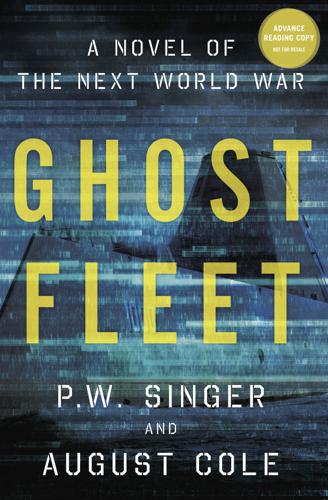
Ghost Fleet: A Novel of the Next World War
by
P. W. Singer
and
August Cole
Published 28 Jun 2015
The initial penetrations didn’t raise any alarms among the automated computer network defenses, always on the lookout for anomalies. At each stop, all the packet did was link with what appeared to the defenses as nonexecutables, harmless inert files, which they were, until the malware rearranged them into something new. Each of the systems had been air-gapped, isolated from the Internet to prevent hackers from infiltrating them. The problem with high walls, though, was that someone could use an unsuspecting gardener to tunnel underneath them. Shanghai Jiao Tong University A thin teenage girl stood behind a workstation, faintly glowing metallic smart-rings on all her fingers, one worn above each joint.
…
Defense Intelligence Agency, accessed August 19, 2014, http://www.dia.mil/About.aspx. 38 A compact HK G48: “G36C — Das ultrakurze Sturmgewehr,” Heckler and Koch, accessed August 17, 2014, http://www.heckler-koch.com/de/produkte/militaer/sturmgewehre/g36/g36c/produktbeschreibung.html; fictional version. 38 using covert radio signals: Geoffrey Ingersoll, “The NSA Has Secretly Developed the ‘Bigfoot’ of Computer Hacks,” BusinessInsider.com, January 15, 2014, accessed August 19, 2014, http://www.businessinsider.com/nsa-has-the-bigfoot-of-computer-hacks-2014-1. 39 SIPRNet classified network: Sharon Weinberger, “What Is SIPRNet?,” Popular Mechanics, December 1, 2010, accessed August 19, 2014, http://www.popularmechanics.com/technology/how-to/computer-security/what-is-siprnet-and-wikileaks-4085507. 39 air-gapped: Peter W. Singer and Allan Friedman, Cybersecurity and Cyberwar: What Everyone Needs to Know (New York: Oxford University Press, 2014). 39 three faintly glowing metallic smart-rings: Darren Quick, “Ring Puts the Finger on Gesture Control,” Gizmag, March 4, 2014, accessed August 19, 2014, http://www.gizmag.com/logbar-smart-ring-bluetooth/31080/. 39 nicknamed the Eastern MIT: “Shanghai Jiao Tong University,” Times Higher Education World University Rankings 2012–2013, accessed August 19, 2014, http://www.timeshighereducation.co.uk/world-university-rankings/2012-13/world-ranking/institution/shanghai-jiao-tong-university. 39 Hainan Island incident: “Interview with Lt.

Bottoms Up and the Devil Laughs
by
Kerry Howley
Published 21 Mar 2023
The Snowden documents were treated, by The Intercept, with reverential safety protocols. To access them you had to enter a tiny room with a lock that required multiple people to open. You couldn’t be in there alone. There were cameras everywhere. Everything logged. The computer itself was connected to nothing, air-gapped. This was something The Intercept had the capacity and expertise to do: report on documents a savvy leaker had handed them in a responsible way. It was, frankly, a pain in the ass, so much so that some of the staff felt the documents were underused; there was interesting stuff that was just too annoying to report on.

Whiplash: How to Survive Our Faster Future
by
Joi Ito
and
Jeff Howe
Published 6 Dec 2016
It also, however, demonstrates why resilience is always preferable to strength: There is no Fort Knox in a digital age. Everything that can be hacked will, at some point, be hacked. To convey just how stunned security experts were when Stuxnet became public, consider this: The SCADA systems in use at a nuclear plant are “air-gapped.” That means that they have absolutely no connection to the outside world. When technicians do need to transfer data in or out of these systems, they do so by protected USB sticks. Stuxnet had either managed to get onto a plant employee’s jump drive, or it was an inside job. This feat gained considerably more stature once analysts determined that the virus had targeted five nuclear facilities in Iran—thought to be of the securest sites anywhere in the world.
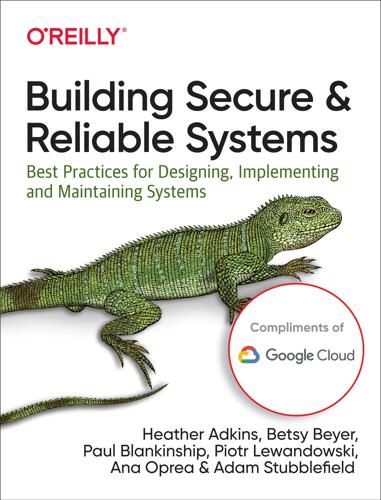
Building Secure and Reliable Systems: Best Practices for Designing, Implementing, and Maintaining Systems
by
Heather Adkins
,
Betsy Beyer
,
Paul Blankinship
,
Ana Oprea
,
Piotr Lewandowski
and
Adam Stubblefield
Published 29 Mar 2020
An outage that impacts your production network may be hard to recover from unless you have secure alternative pathways to access the network control plane. Similarly, if you discover a breach and aren’t sure how widespread the compromise of your corporate workstations is, recovery will be much easier if you have a known safe set of air-gapped systems that you can still trust. Training IR team members should be trained on severity/priority models, the IR team’s operating model, response times, and the locations of response plans and playbooks. You can read more about Google’s approach to incident response in Chapter 9 of the SRE workbook.
…
Information management and communication during recovery are vital components of a successful response. Raw incident trails, scratch notes, recovery checklists, new operational documentation, and information about the attack itself will be important artifacts. Be sure that this documentation is available to recovery teams but inaccessible to the attacker; use something like an air-gapped computer for storage. For example, you might use a combination of information management tools like bug tracking systems, cloud-based collaboration tools, whiteboards, and even notecards taped to a wall. Make sure those tools are outside the broadest potential scope of the attacker’s compromise of your systems.

The Truth About Lies: The Illusion of Honesty and the Evolution of Deceit
by
Aja Raden
Published 10 May 2021
And that’s precisely what a lot of billionaires are currently doing.40 A company called Xapo, run by Argentine entrepreneur Wences Casares, has spent years persuading Silicon Valley millionaires and billionaires that Bitcoin is the future—exactly what kind of future I guess we can sort out later—but in it they’ll need their Bitcoin. And since it can be so easily stolen by hackers, these big coin holders have decided (or Casares has convinced them) that it’s safer to keep it in his cold storage. He’s holding billions of dollars’ worth of Bitcoin, physically, on air-gapped, encrypted, unconnected private servers—to which only he and (sometimes) the Bitcoin owners have keys—inside the Fort Knox–like facilities he’s built around the world, complete with guards, blast doors, and reinforced concrete.41 He’s basically made high-tech strong boxes, safe and cut off from the digital world, in which to store your digital currency.
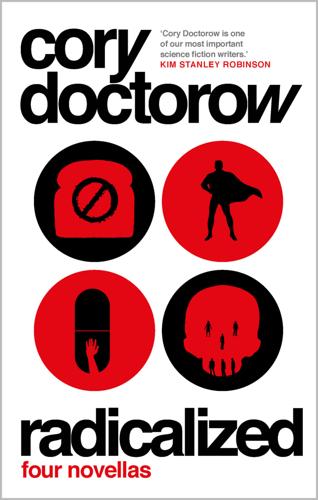
Radicalized
by
Cory Doctorow
Published 19 Mar 2019
There had always been low-key conspiracy theories about the Eagle, going back centuries: he was a demon summoned by Freemasons to subjugate America; he was a secret laboratory experiment gone horribly wrong (or, sometimes, exactly right); he was a special effect created by hologram projectors or AI-based video-doctoring algorithms, and the people who claimed to have seen him were hypnotized, or crisis actors, or special effects themselves. Then Bruce asked to see him and brought along a small, air-gapped tablet on which he’d stored PDFs of the Intellipedia entries about the Eagle, along with their edit histories, as NSA analysts and private-sector contractors from Booz Allen and Palantir and S.A.I.C. debated their own conspiracy theories about his use as a secret Chinese (or European, or Russian, or private-sector crime syndicate) asset, and what someone might have offered him or threatened him with in order to turn him.
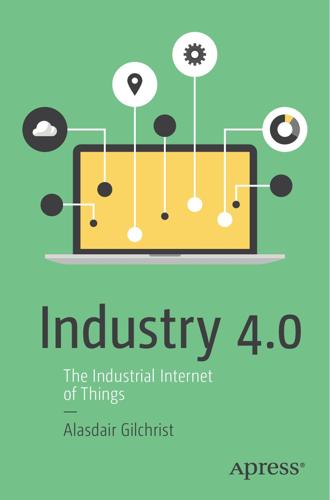
Industry 4.0: The Industrial Internet of Things
by
Alasdair Gilchrist
Published 27 Jun 2016
Traditionally, industrial networks have managed to remain immune to most of the scourges of the Internet such as viruses, worms, Trojans and DDos attacks, simply because their architecture and protocols are so different from IT enterprises and consumer computer devices. Rarely do industrial systems run on Windows or Linux, instead the vast majority run on small proprietary operating systems connected over non-IP protocols and serial bus topologies. Additionally, many of these networks have air-gaps between the support departments, such as finance, sales, customer support, and IT’s IP networks, which provide for a degree of isolation. Even if there were a direct network connection to the Internet, a simple VPN pipe would be all that would be required to interconnect remote facilities for M2M inter-communication any other non-M2M traffic would travel across the IT Internet gateway.

Black Code: Inside the Battle for Cyberspace
by
Ronald J. Deibert
Published 13 May 2013
Lindner found a file inside the code named Myrtus, and speculated this could be a reference to the Book of Esther, an Old Testament story where the Jews pre-empt a Persian plot to destroy them. It is hard to believe the Israelis would unwittingly leave such tell-tale signs of their involvement in Stuxnet; much more likely they show a deliberate intention to drop coy admissions of prowess. A remarkable component of Stuxnet was its ability to cross “air-gapped” computing systems that are not actually connected to the Internet. In April 2012, the website Isssource.com, belonging to Industrial Safety and Security Source, published an article alleging that “former and serving U.S. intelligence officials” had said that an Iranian double agent working for Israel had inserted Stuxnet into the Iranian control systems using a corrupt memory stick.
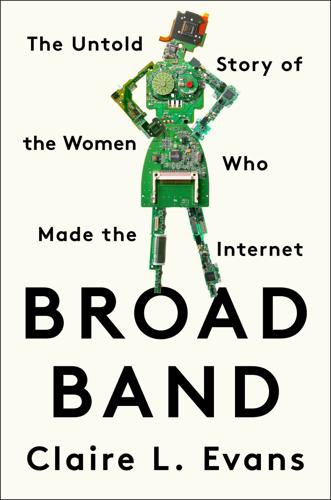
Broad Band: The Untold Story of the Women Who Made the Internet
by
Claire L. Evans
Published 6 Mar 2018
“It’s seven turkeys and four bands and a bowling lane size, makeshift banquet with Dumpster roses.” At Sherry’s house I meet four former Project One residents who have come from all corners of the Bay Area: beyond Sherry, there’s Pam Hardt-English, Mya Shone, and Chris Macie. Pam’s bay at Project One was a loft bed encased in air-gapped walls of red translucent plastic. Mya slept on a wooden pallet when she came from New York City with only the clothes on her back and dreams of becoming a full-time revolutionary. Sherry inherited a little house with white steps and a front door. They cooked on hot plates, shared bathrooms, and worked in the same building they called home, which was full of political organizations, artist studios, and production facilities.

Dark Territory: The Secret History of Cyber War
by
Fred Kaplan
Published 1 Mar 2016
They knew about the vulnerability of digital controls, and they’d read that surrounding computers with an air gap—cutting them off from the Internet, making their operations autonomous—was one way to eliminate the risks: if the system worked on a closed network, if hackers couldn’t get into it, they couldn’t corrupt, degrade, or destroy it, either. What the Iranians didn’t know was that the hackers of TAO had long ago figured out how to leap across air gaps. First, they’d penetrated a network near the air-gapped target; while navigating its pathways, they would usually find some link or portal that the security programmers had overlooked.
…
Central Command, the headquarters running the wars in Afghanistan and Iraq. A beacon was emitting a signal, and it seemed to be coming from inside CentCom’s classified computers. This was not only strange, it was supposedly impossible: the military’s classified networks weren’t connected to the public Internet; the two were separated by an “air gap,” which, everyone said, couldn’t be crossed by the wiliest hacker. And yet, somehow, someone had made the leap and injected a few lines of malicious code—that was the only plausible source of the beacon—into one of the military’s most secure lines of communication. It was the first time ever, as far as anyone knew, that a classified network of the Department of Defense had been hacked.
…
W., 21, 24, 44, 66 Bush, George W., 3, 103, 171, 173, 175–76, 216, 225, 304n–5n FISA revision and, 193, 195 Iraq insurgency and, 150 Iraq invasion and, 142–43, 145, 147 Iraq troop surge ordered by, 158, 173 McConnell’s cyber warfare briefing of, 173–75, 187 NSPD-54 of, 178, 199 Obama’s Stuxnet briefing by, 203 Stellar Wind and, 155n Stuxnet and, 203, 205, 206, 208, 209, 212, 215 in 2000 election, 103, 139–40 Bush (G.W.) administration: cyber security as viewed in, 140–41 cyber warfare and, 3 terrorism as low priority of, 140–41 warnings on al Qaeda ignored by, 240–41 Butler, Robert, 279 Campbell, John “Soup,” 70–71, 110–11, 121, 122 JTF-CND headed by, 81–82, 83–84, 88 Canada, see five eyes Cannon, Lou, 287n–88n Carter, Ashton, 283 Carter, Jimmy, 13, 15, 59 Cartwright, James, 219 Casablanca (film), 234–35 Casey, William, 27 Central Command, U.S., 145–46, 147–48, 149, 152, 207, cyber attack on, 181–84, 185 Central Intelligence Agency (CIA), 6, 27, 45, 49, 126, 146, 147, 151, 185, 229, 238–39 civil liberties abuses by, 192 Critical Defense Technologies Division of, 7 Hayden as director of, 215 Information Operations Center of, 113, 134, 161, 207 NSA interaction with, 133–34 Cerf, Vint, 102, 103 Charney, Howard, 235 Cheney, Dick, 24, 140, 174, 203–4 Chilton, Kevin, 183 China: information warfare and, 224 U.S. hacking of computer systems in, 227–28, 229 U.S. relations with, 221–28 China, cyber warfare by, 4, 85n, 198, 213, 220, 221–28, 242, 269 financial theft in, 224, 227 Google attack of, 234 intellectual property and trade secrets as targets of, 224–27, 308n Obama and, 221–28, 235 see also People’s Liberation Army Christopher, Warren, 12–13 Church, Frank, 37, 192, 285 Church Committee, 37, 230, 252 “CIA Eavesdrops on Kremlin Chiefs” (Anderson), 288n–89n Cisco, 137, 235 Citibank, Russian hackers’ attack on, 42 civil liberties: intelligence community and, 251–52, 259, 260 NSA and, 3, 20, 188, 192, 194–96, 231, 239, 244–52, 264 Protect America Act and, 194–95 Stone and, 239, 244, 251, 259, 264 Civil War, U.S., 4 Clapper, James, 231–33 Clark, Wesley, 112, 113, 115 Clarke, Richard, 139, 174, 175–76, 177, 191n, 200, 225, 274 books written by, 240–42 in Bush (G.W.) administration, 140–41, 143 as Clinton’s counterterrorism adviser, 89, 95–97 critical-infrastructure plan of, 239–40 FBI briefing and, 254–55 Hamre and, 95–96 L0pht and, 91–4 National Plan for Information Systems Protection written by, 100–105, 141–42 9/11 attacks and, 141 9/11 Commission testimony of, 240 PDD-63 as drafted by, 97–99 presumptuousness of, 95–96, 98, 101, 240 in Review Group, 240, 243, 245, 247, 251, 253, 254–55 Zatko and, 90–95, 103–4 Clinton, Bill, 3, 40, 55, 74, 87, 89, 96, 102, 115, 175–76, 239 cyber security summit of, 102–4 Executive Order 13010 of, 47, 48–49, 74 Haitian invasion planned by, 58–59, 107–8 Lewinsky affair and, 103, 115 PDD-39 of, 39–40 PDD-63 of, 95 Clipper Chip, 36–37, 40, 58, 100, 128, 239, 244 CNCI, see Comprehensive National Cybersecurity Initiative (CNCI) Coalition Vulnerability Assessment Team, 65–66 Cohen, William, 113, 120, 121 Cold War, 4, 84, 129, 184, 284 cryptology in, 13 end of, 29, 30, 123, 124 espionage in, 138–39 NSA and, 12 nuclear options in, 218 unspoken rules in, 272–73 command-control systems, 13, 15, 43, 51, 65, 224 Commerce Department, U.S., 34 cyber security as viewed in, 172–73 Comprehensive National Cybersecurity Initiative (CNCI), 177–78, 180, 198–99, 278 Computer Crime Initiative Plan, 41–42 computer industry: cyber security as low priority of, 102–3, 104–5, 176 PDD-63 resisted by, 98, 99–100 Snowden leaks and, 234 Computer Network Attack (CNA), 122, 137–38, 180, 204, 211, 212, 219, 220, 281, 283 Computer Network Defense (CND), 122, 137–38, 180 Computer Network Exploitation (CNE), 137–38, 180, 204, 212, 281 computer networks, 33 back doors in, 8, 73 IDS devices in, 176 infrastructure and, 41, 45, 52–53 inherent vulnerability of, 172, 174, 176–77, 179, 206–7, 241, 276–77 see also Internet computers, computer software: omnipresence of, 5 race between hackers and patchers in, 136–37 security of, see cyber security zero-day vulnerabilities in, 137 Computers at Risk (National Research Council), 54 Computer Sciences Corp., 132 Computer Security Act (1987), 34 Computer Security Center (NSA), 18–19, 34, 60 Congress, U.S., 192 CNCI and, 178–79 defense authorization bills of, 46–47 NSA and, 3, 20, 27, 195–96 select intelligence committees of, 256 Congressional Budget Office, 71 Constitution, U.S., Fourth Amendment of, 192, 250 Cornerstones of Information Warfare (Weaver), 108 corporations: cyber security as low priority of, 102–3, 104–5, 176, 274 regulations feared by, 98–99, 101, 176, 200, 274–75 as reluctant to share information, 281–82 Cotter, George, 18–19 counter command-control (counter-C2) warfare, 15–16, 33, 41, 58, 59, 76, 84, 220 in Desert Storm, 21–25 counterinsurgency strategies, 148, 158–59, 160 Critical Foundations (Marsh Report), 53–55, 72, 80, 89, 94, 100, 139, 142, 166, 199, 241 “Critical Infrastructure Protection” (PDD-63), 95, 139 Clarke’s draft of, 97–99 computer industry objections to, 98, 99–100 see also National Plan for Information Systems Protection Critical Infrastructure Working Group, 40–41, 42–43, 48, 51 report of, 46, 47–48, 50 Cryptolog, 219–20 cryptology, 5, 7, 11, 13, 18 Cuckoo’s Egg, The (Stoll), 61, 82–83 “cyber,” first use of term, 45–46 cyber attacks, cyber warfare, 4–6, 53 Abizaid’s prioritizing of, 145–48, 149–50 as acts of war, 214, 271, 317n Alexander’s expertise in, 149, 157–58 banking industry and, 104, 275 Bush (G.W.) administration and, 3 on Central Command, 181–84, 185 by China, see China, cyber warfare by denial-of-service, 102–3, 162–63, 213, 216 distinction between national security and property theft in, 227 Eligible Receiver in, see Eligible Receiver 97 cyber attack exercise escalation of, 213–20, 273–74, 284 on Estonia, 162–64, 165, 241 Gates’s concern about, 272–73 on Georgia, 164–66, 241 infrastructure as targets of, 104 and inherent vulnerability of networks, 276–77 Iran and, 4, 213, 265–68 against Iraq insurgents, 158–60, 173, 180 on Las Vegas Sands Corporation, 265–68 Law of Armed Conflict and, 25 Moonlight Maze and, 78–79, 81–88, 98, 119, 123, 187, 212–13, 223, 241, 276 morality of, 215 by North Korea, 4, 213, 216, 268–71, 272n nuclear weapons vs., 215–16, 218 Obama administration and, 3–4 physical damage from, 166–69, 174, 198, 214, 215 political influence as goal of, 267 race between hackers and patchers in, 136–37 Reagan administration and, 1–3, 6–7 risks of, 212–13 by Russia, 4, 42, 164–66, 224 secrecy of, 212, 214–15, 216, 219, 284–85 Solar Sunrise and, 74–78, 80, 81, 98, 101, 119, 120, 123, 183, 187, 241 strategic role of, 168, 215 terrorists and, 98 unintended consequences of, 217 U.S. military’s resistance to, 117–18, 119, 120 U.S. offensive operations in, 4, 48–49, 174, 211–12, 291n zero-day vulnerabilities and, 137 see also hacking, hackers; information warfare; specific operations and attacks Cyber Command, U.S., 4, 211, 279–80 Alexander as head of, 189, 211 combatant support mission of, 280, 283 consolidation of armed services cyber agencies under, 195 critical-infrastructure security mission of, 280–83 Defense Department network security mission of, 280, 283 fusion of NSA and, 243, 260 McConnell’s proposal for, 185 Review Group recommendations for, 257 Rogers as head of, 282 Cyber Council, 176 cyber crime, 41–42, 46 CNE and, 139 cyber deterrence, 283 asymetrical response in, 277–78 Defense Science Board and, 278–79 McConnell and, 278 nuclear deterrence vs., 284–85 cyber-offensive teams, 211–12 Cyber Operations Policy Working Group, 217 cyber security, 17, 186, 243, 257 active defense (offensive operations) in, 281, 282, 283 air gaps in, 206–7 ARPANET and, 8–9 back doors and, 8, 37, 73 banking industry’s low priority for, 175 Bush (G.W.) administration complacency about, 140–41 Clinton’s summit on, 102–4 CNE and, 139 computer industry’s low priority for, 102–3, 104–5, 176 computer networks and, 33 Defense Science Board report on, 275–79 detection as goal of, 277 exponential rise in breaches of, 273–74 information-sharing and, 281–82 infrastructure and, 186–89 Internet and, 52–53 McConnell’s briefing of Bush on, 174–75 McConnell’s focus on, 172, 198, 278 military’s complacency about, 64, 105, 119 Obama’s prioritizing of, 200–201 resilience as goal of, 277 Review Group’s prioritizing of, 257–58 Wilhelm’s focus on, 40 cyberspace, 41, 45 as domain of warfare, 6 Cyberspace Policy Review, 199–200 Cyber War (Clarke), 241–42, 243 DarkSeoul, 269 data packets, 5–6, 131, 156, 157–58, 192–93, 194, 248, 249–50 Dayton Accords, 110, 112 DEF CON Hacking Conference, 136 defense contractors: Chinese cyber attacks on, 224–25 hacking of, 41 Defense Department, U.S., 6, 18, 54, 67, 100, 257 Advanced Research Projects Agency (ARPA), 7 Critical Infrastructure Commission and, 49 cyber attacks on, 47 in Eligible Receiver, see Eligible Receiver 97 cyber attack exercise hacking and, 41 IDS devices and, 81, 120, 176 infrastructure policy directorate of, 43–44 Internet connections to, 280 J Department of, 43, 44 Microwave, Space and Mobile Systems office of, 19 Moonlight Maze cyber attack on, 78–79, 81–88, 119, 123, 212–13, 223 National Communications System of, 177 network security of, 280, 283 Solar Sunrise attack on, 74–78, 80, 81, 101, 119, 120, 123 Special Technological Operations Division of, 7 Strategic Leveraging Project of, 43 Defense Information Systems Agency (DISA), 65, 74, 75, 78, 80, 82 Defense Intelligence Agency, 57 Defense Science Board: cyber deterrence task force of, 279 cyber security report of, 275–79 “Information Warfare-Defense” task force of, 54 demon-dialing, 9–10, 59, 64, 112, 113, 161 denial-of-service attacks, 102–3, 162–63, 213, 216 Department of Defense Cyber Strategy, The (Carter), 283, 316n–17n Depression, Great, 199 Desert Storm, Operation, 21–25, 29, 32, 74, 132–33, 149, 290n civilian casualties in, 24–25 deterrence: in cyber warfare, see cyber deterrence nuclear, 277, 278, 284–85 Deutch, John, 49 Devost, Matt, 65, 66, 80–81, 273, 293n digital communications: data packets in, 5–6, 17–18, 131, 156, 192–93, 194, 248, 249–50 GCHQ’s collection of data from, 228–29 global switch from analog to, 25, 28–29, 30, 35, 126–27, 275–76 metadata in, see metadata NSA’s collection of data from, 196–97, 228–29, 230–35, 237–64 PRISM and, 247–52 U.S. as hub of, 191–92, 193, 248 see also telecom companies Donilon, Thomas, 187, 228, 238 Asia Society speech of, 221–22, 226–27 Earnest, Josh, 272n East Germany, 235 cyber attacks by, 61–62, 83 eBay, 102 e-commerce, 102 Einstein (IDS project), 177, 179 elections, U.S.: of 2000, 103, 139–40 of 2008, 197, 198 Electromagnetic Systems Laboratory, see ESL, Inc.

Mindf*ck: Cambridge Analytica and the Plot to Break America
by
Christopher Wylie
Published 8 Oct 2019
In another box sit the remnants of hard drives, degaussed, smashed up, or acid-bleached after the evidence on them was handed over to the authorities. The data is gone forever, and I might as well throw them out, but I feel oddly sentimental about them. In the living room, I have an antique wooden desk from an old factory, and on it sits an air-gapped laptop that has never been connected to the Internet. I used it to work through evidence handed over to the House Intelligence Committee. In the drawer is the blank laptop I use for traveling, in case it is searched at the border. My personal computer sits in the living room, encrypted and locked down with a physical U2F key.

A New History of the Future in 100 Objects: A Fiction
by
Adrian Hon
Published 5 Oct 2020
It exploited an obscure flaw in their old networking chips, causing a catastrophic cascading digital certificate failure that wiped entire months’ worth of data and trashed unthinkable quantities of equipment. If it weren’t for some quick-witted amp teams, her virus might have ended up killing someone. In another era, they would have called what she did a capital crime. Her punishment was clear: air-gapping. For the next thirty years, she could never use networked computers. I visited her in New Mexico afterwards, face to face. She was rebuilding a disused array by hand. I asked her why she did it. She told me a story about a civil war among the SETI AIs after they discovered her supposed cepheid signal, that “Stephe” and “Boulogne” had wanted to tell the world, and that “Matilda” and “Gloucester” had wanted to cover it up and keep it for themselves.
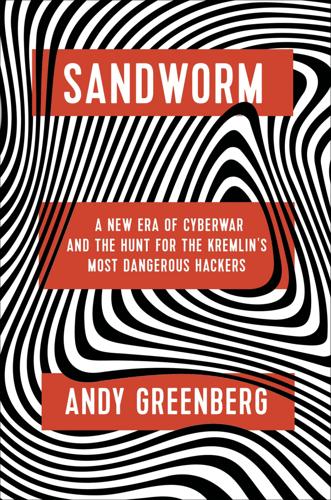
Sandworm: A New Era of Cyberwar and the Hunt for the Kremlin's Most Dangerous Hackers
by
Andy Greenberg
Published 5 Nov 2019
First, the malware had been designed to jump across air gaps: Iran’s engineers had been careful enough to cut off Natanz’s network entirely from the internet. So, like a highly evolved parasite, the malware instead piggybacked on human connections, infecting and traveling on USB sticks. There it would lie dormant and unnoticed until one of the drives happened to be plugged into the enrichment facility’s isolated systems. (Siemens software engineers might have been the carriers for that malware, or the USB malware might have been more purposefully planted by a human spy working in Natanz.) Once it had penetrated that air-gapped network, Stuxnet would unfold like a ship in a bottle, requiring no interaction with its creators.
…
The infrastructure that runs those sensitive systems is meant to be entirely cut off from the internet, to protect it from hackers who might sabotage it and carry out catastrophic attacks. The companies that run such equipment, particularly the electric utilities that serve as the most fundamental layer on which the rest of the industrialized world is built, constantly offer the public assurances that they have a strict “air gap” between their normal IT network and their industrial control network. But in a disturbing fraction of cases, those industrial control systems still maintain thin connections to the rest of their systems—or even the public internet—allowing engineers to access them remotely, for instance, or update their software.
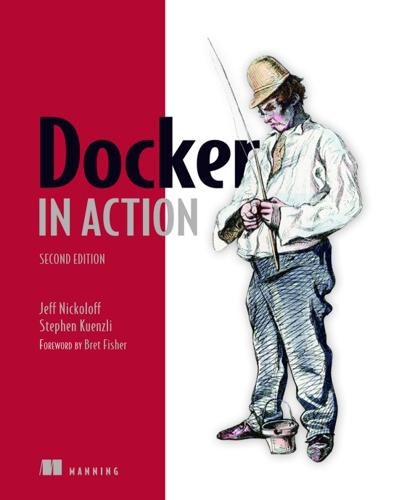
Docker in Action
by
Jeff Nickoloff
and
Stephen Kuenzli
Published 10 Dec 2019
You could use any of these distribution channels for image distribution. You can even use email or a USB drive in cases where you know your image recipients. Manual image distribution methods provide the ultimate in flexibility, enabling varied use cases such as distributing images to many people at an event simultaneously or to a secure air-gapped network. When you work with images as files, you use Docker only to manage local images and create files. All other concerns are left for you to implement. That void of functionality makes manual image publishing and distribution the second-most flexible but complicated distribution method. This section covers custom image distribution infrastructure, shown on the spectrum in figure 9.5.

Reset
by
Ronald J. Deibert
Published 14 Aug 2020
This arrangement created a safety check of sorts — a way to remove Snowden himself from the decision loop and publish only material that the journalists, their editors, and the experts they consulted concluded was in the public interest. It also created a unique opportunity for me and some of my colleagues at the Citizen Lab to review a substantial slice of the materials in their raw form, before they were subject to redaction. So began about a year of careful handover of sensitive documents, special access controls, “air-gapped” systems disconnected from the internet, and a general angst all around as to what minefields we might be stepping into. From popular films and TV shows like Enemy of the State, the Bourne series, Homeland, and The X-Files, many of us have become accustomed to Hollywood portrayals of top secret, seemingly omniscient government agencies having special means to peer inside our lives, turn on cameras on street corners, or tap into phones at will.
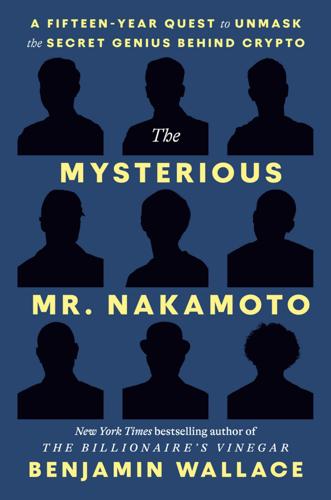
The Mysterious Mr. Nakamoto: A Fifteen-Year Quest to Unmask the Secret Genius Behind Crypto
by
Benjamin Wallace
Published 18 Mar 2025
Not that anyone would advise doing this, given that a single misremembered digit could cost you your assets. Self-custody, an ideal that would come to be enshrined in the crypto-head mantra “Not your keys, not your coins,” carried its own set of problems. Stefan Thomas, a Swiss programmer, had stored copies of the keys to 7,002 bitcoins in three places, putting his main wallet on a “virtual machine” air-gapped from the internet and backing it up both with TrueCrypt software and on an IronKey, a secure piece of hardware resembling a thumb drive. But then, while updating his operating system, he accidentally deleted the virtual machine. And when he logged into his TrueCrypt, which was stored in Dropbox, it, too, was deleted; it turned out that it could be overwritten if more than two machines were logged in at the same time.
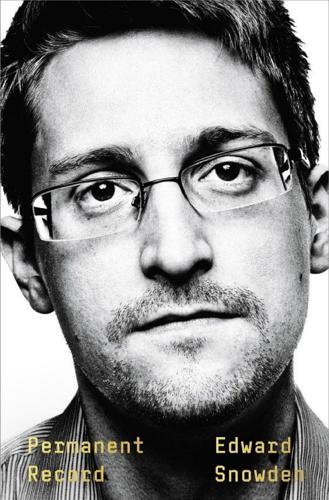
Permanent Record
by
Edward Snowden
Published 16 Sep 2019
My mother would take care of Lindsay and Lindsay would take care of her. Each would need the other’s strength to weather the coming storm. The day after Lindsay left, I took an emergency medical leave of absence from work, citing epilepsy, and packed scant luggage and four laptops: secure communications, normal communications, a decoy, and an “airgap” (a computer that had never gone and would never go online). I left my smartphone on the kitchen counter alongside a notepad on which I scribbled in pen: Got called away for work. I love you. I signed it with my call-letter nickname, Echo. Then I went to the airport and bought a ticket in cash for the next flight to Tokyo.
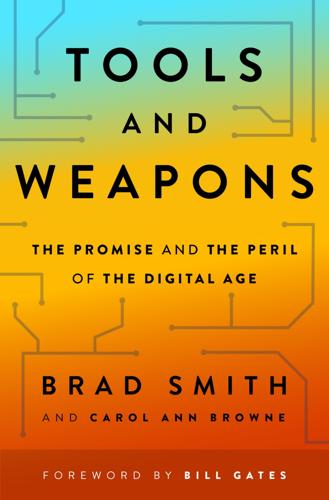
Tools and Weapons: The Promise and the Peril of the Digital Age
by
Brad Smith
and
Carol Ann Browne
Published 9 Sep 2019
MSTIC had monitored Strontium since 2014 as it engaged in so-called spear-phishing attacks, sending carefully crafted emails as a ploy to trick targets into clicking on links from what appeared to be trusted websites, some of which contained the name Microsoft. Strontium would then use a variety of sophisticated tools to engage in key logging, email address and file harvesting, and information gathering from other computers. The group even used a tool to infect connected USB storage devices to try to retrieve data from other air-gapped computers that were not on the network. Strontium was not only more sophisticated but also more persistent than criminal hacking enterprises, sending a selected target numerous phishing emails over an extended period. Successfully scamming a high-value target was clearly worth the investment.
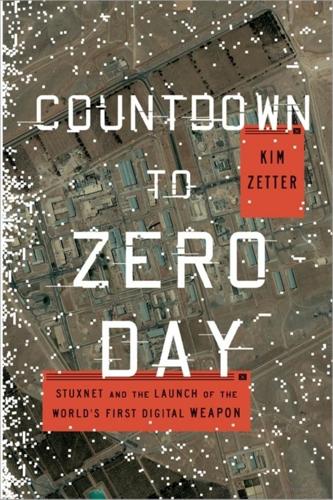
Countdown to Zero Day: Stuxnet and the Launch of the World's First Digital Weapon
by
Kim Zetter
Published 11 Nov 2014
SYMANTEC IS A large, international corporation, but Chien and O’Murchu worked out of a small satellite office, going at it primarily alone with little input. They worked in Symantec’s Threat Intelligence Lab in Culver City, the cyber equivalent of a biodefense lab, where researchers could unleash malevolent code on a “red” network—a sandboxed system air-gapped from Symantec’s business network—to observe its hostile behavior in a controlled environment. To reach the ground-floor lab, workers passed through several sets of security doors, each with progressively more restrictive rules. The final gateway kept all but a handful of workers out and physically isolated the red network from computers connected to the outside internet.
…
To transfer commands to a PLC, someone had to transfer them via a laptop connected directly to a PLC with a cable or to carry them on a USB flash drive to a programming machine, called a Field PG—a Windows laptop used in industrial-control settings. The Field PG is not connected to the internet but is connected to the production network and the PLCs. By infecting Step 7 project files and investing Stuxnet with the power to jump the air gap as a USB stowaway, the attackers had essentially turned every engineer into a potential carrier for their weapon. Once Chien and O’Murchu documented all of the exploits and vulnerabilities that Stuxnet used to spread, they realized there was something else that stood out about them. A number of them had actually been seen before.
…
Safety systems used to be hardwired analog systems configured separately from control systems so that any problems with the control system wouldn’t interfere with the safety system’s ability to shut down equipment in an emergency. But many vendors are now building the safety system into their control system, making it easier to disable them both in a single attack.34 Many of the vulnerabilities in control systems could be mitigated if the systems ran on standalone networks that were “air-gapped”—that is, never connected to the internet or connected to other systems that are connected to the internet. But this isn’t always the case. In 2012, a researcher in the UK found more than 10,000 control systems that were connected to the internet—including ones belonging to water-treatment and power plants, dams, bridges, and train stations—using a specialized search engine called Shodan that can locate devices like VoIP phones, SmartTVs, and control systems that are connected to the internet.35 In 2011 a hacker named pr0f accessed the controls for a water plant in South Houston after finding the city’s Siemens control system online.
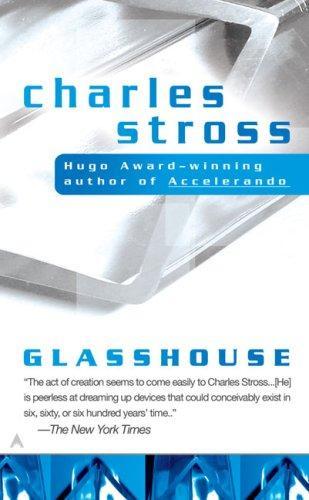
Glasshouse
by
Charles Stross
Published 14 Jun 2006
"I'll ask someone to investigate." She stares right through me, a reminder that there are three or four other copies of this strange old archivist wandering the concentric cylinder habs of the ship. She blinks rapidly. "It appears to be a security alert. Some sort of intruder just hit our transcription airgap. If you wait here a moment, I'll go and find out what's going on." She walks over toward the door of the teahouse and, as far as I can reconstruct later, this is the precise moment, when a swarm of eighteen thousand three hundred and twenty-nine wasp-sized attack robots erupt from the assembler in my family's home.
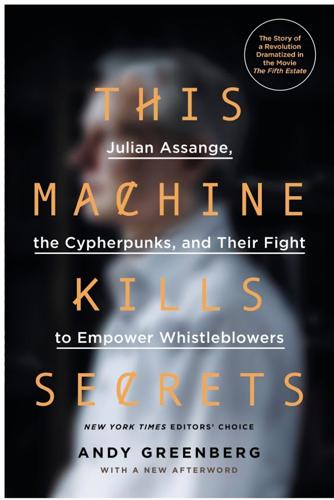
This Machine Kills Secrets: Julian Assange, the Cypherpunks, and Their Fight to Empower Whistleblowers
by
Andy Greenberg
Published 12 Sep 2012
Compared to photocopying seven thousand pages several times over, Manning’s leaks were also phenomenally easier—the difference between spending months harvesting a season of crops and playing a few hours of FarmVille on Facebook. In the midst of his work as a low-level intelligence analyst in Iraq, Manning slipped a rewritable CD marked with “Lady Gaga” into the tray of his work machine, a PC connected only to the military’s high-security Secret Internet Protocol Router Network, or SIPRNet. The SIPRNet was “airgapped”: It wasn’t connected to the Internet through any plug or wireless signal. But Manning could simply copy the CD’s music to the computer, delete it from the rewritable disc, burn whatever top secret data he wanted to the piece of plastic, and walk away with it minutes later. “[I] listened and lip-synced to Lady Gaga’s ‘Telephone’ while exfiltrating possibly the largest data spillage in American history,” Manning would write a few months later.

Engineering Security
by
Peter Gutmann
A typical SCADA security measure is “use an unroutable network protocol” or “hope that no-one ever figures out the homebrew wire protocol that the company founder invented in the shower 20 years ago”. In some cases even the use of unroutable network protocols or a complete air gap doesn’t necessarily protect SCADA systems, as the Stuxnet malware that was discussed in “Digitally Signed Malware” on page 50 showed. This took advantage of the fact that airgapped computers have to be configured and updated in some manner, and this is typically done using USB keys or similar removable media. By targeting vulnerabilities in the handling of removable media, Stuxnet ensured that it would be propagated even to airgapped machines. A few times a year there are scare stories in the media about how vulnerable assorted SCADA infrastructures are, but in practice very little ever happens because of SCADA systems’ major defence: they’re so profoundly uninteresting to real attackers (rather than security people trying to make a point) that no-one bothers with them.
…
Mozilla’s response was that they planned to take no action against any of the CAs [584] (making this particularly egregious was the fact that the same failings that were being ignored when existing TB2F CAs committed them were being used to block new CAs from being admitted to the browser trust lists, emphasising again the fact that once a CA made it over the TB2F barrier a different set of rules applied [585]. Alongside TB2F CA root certificates, timestamping certificates that are used for long-term code signing are another example of too-critical-to-revoke certificates, making them tempting targets for theft. Unlike CA root certificates, which are rarely used and can be subject to airgap security, timestamping certificates have to be kept online at all times because they’re used for automated counter-signing of binaries that run on hundreds of millions of end-user machines (a more detailed discussion of the intricacies of code-signing certificate revocation issues is given in “Dealing with Certificate Problems” on page 722).
…
A slightly better approach is to use a QR 2D barcode in conjunction with a smartphone, a so-called QR-TAN, to convey secured transaction data to the user [126]. The result in all of these cases is cryptographically tied to both the transaction and the account and serves as the TAN. This process not only provides an air gap between the trusted and untrusted components but makes the TAN-entry process an explicit user-initiated and –controlled action rather than something that a trojan can perform behind the user’s back. Numerous variations of this mechanism exist, with a typical reader being used in combination with an ATM card shown in Figure 150.

Coders: The Making of a New Tribe and the Remaking of the World
by
Clive Thompson
Published 26 Mar 2019
In other words, artificial-intelligence experts could be happily tinkering away with a computer that’s merely very smart, only to suddenly discover, literally in the blink of an eye, that it has evolved into something that can think faster than all humanity working together. Sure, but how exactly could a disembodied AI kill us? It might figure out how to hack into our increasingly connected—and shoddily defended—everyday systems and shut them down. Maybe, to prevent this, we could require anyone who gets close to making a human-class AI to work on an air-gapped computer that’s not connected to anything else, or the internet. Fine, Bostrom says, but an ultraintelligent machine might be extremely persuasive; it could likely trick or entice one of its human minders into doing its will. It might even conceal the fact that it’s become super smart, the better to sneak away.

Matter
by
Iain M. Banks
Published 14 Jan 2011
This was somewhat ignominious to her, as with her old upgrades her skin would have ridged and puckered over whatever area was required to absorb the gases she needed straight out of the water. The thin-film screen was stuck across her eyes like a flimsy transparent bandage. She had switched off her blink reflex; the alternative was to let the screen bulge out far enough for her to blink normally, but the air-gap introduced unwanted distortions. The screen provided her with the virtual view of the real space, showing the cavernous semi-spherical spaces of the Great Ship like some staggeringly vast cave system. She could have patched directly into the ship’s internal sensory view to achieve the same effect, or just swum with her own senses and not bothered with the greater, seemingly clear view, but she was being polite; using the thin-film screen meant that the ship could keep an eye on her, seeing, no doubt, what she could see, and so knowing that she wasn’t getting into any Special Circumstances-style mischief.

Meat: A Benign Extravagance
by
Simon Fairlie
Published 14 Jun 2010
Their woodland handbook tells us ‘there is an old rule of thumb that an acre of woodland can produce a cord of wood per year indefinitely’.15 Cords are piles of firewood, which are a convenient dimension for forestry workers (four foot, by four foot, by eight foot), but awkward for scientists because they are in imperial measurements and full of airgaps. On top of that green wood weighs more than air-dried wood, while hardwoods such as oak and ash weigh more than conifers or fast growing broadleaves such as willow. Another complication is that firewood figures tend to be given in tonnes, whereas timber production is usually measured by volume. A cord weighs from 1.3 to 2.5 tonnes if it is green, and perhaps one tonne air dried if it is spruce, or 1.8 tonnes if it is oak.

The Children of the Sky
by
Vernor Vinge
Published 11 Oct 2011
Paws and jaws rolled her over, again and again. They were tearing at her clothes, pulling her gear out of the knapsack. And yet, the feeding frenzy never came, though the crowd was a crushing mass upon her. It was almost as if they were battling each other just to get a snout down and take a nibble. She tried to keep an airgap between her face and forearm as she wriggled in the direction she guessed would take her out of sight of Vendacious and company. The crushing weight seemed to ease; the nips and jabs were distant pain, like memories. Huh? She was lying flat on her back, dizzy even so. Everything was dark. She wiggled her hands and felt about her.

Industrial Internet
by
Jon Bruner
Published 27 Mar 2013
Even highly technical employees are susceptible to spear phishing, in which an attacker sends a very specific email message with malware cloaked as a plausible attachment or Web link. Air gaps — complete isolation of sensitive networks from the Internet — have long been part of industrial security, but they are becoming increasingly unworkable as the value of machine data becomes apparent to managers and as contraband connectivity finds its way in. Systems that rely on air gaps to avoid attacks will be compromised as connections are inevitably made across them. “I don’t think it’s really possible to run a plant without bringing outside information in,” says Eric Byers, the CTO of industrial-security firm Tofino, who has given a conference presentation entitled “Unicorns and Air Gaps — Do They Really Exist?”
…
“I don’t think it’s really possible to run a plant without bringing outside information in,” says Eric Byers, the CTO of industrial-security firm Tofino, who has given a conference presentation entitled “Unicorns and Air Gaps — Do They Really Exist?”[11] Adds Byers: “As for management analytics, that horse ain’t going back in the barn. Even on the plant floor, workers want iPads for both documentation and inventory — what’s in our spare closet? — and that can make the difference between starting up in 15 minutes and starting up in two minutes.” The value of connectivity is high enough, and the stakes perilous enough, that the antivirus firm Kaspersky Lab sees a need for an industrial operating system that is “constructed with security in mind,” says Roel Shouwenberg, who is part of the team developing Kaspersky’s industrial operating system[12].
…
The value of connectivity is high enough, and the stakes perilous enough, that the antivirus firm Kaspersky Lab sees a need for an industrial operating system that is “constructed with security in mind,” says Roel Shouwenberg, who is part of the team developing Kaspersky’s industrial operating system[12]. He figures that true air gaps at industrial facilities impose a productivity hit of 20-30%, and security approaches that are analogous to physical plant security systems (if you’re standing in front of a machine on the factory floor, you’re authorized to be there) are misguided. A better approach, he says, is to “trust no one, trust nothing” — that is, scrutinize what goes on rather than walling off parts of the system.

Dawn of the New Everything: Encounters With Reality and Virtual Reality
by
Jaron Lanier
Published 21 Nov 2017
To protect a computer from hackers, we sometimes create an “air gap.” That means that a computer performing a critical function isn’t even online. It’s out of the reach of hackers. A real person has to use it on-site. Each and every module/editor within a codeless phenotropic network is surrounded by what is effectively an air gap, because they can’t receive abstract messages from one another. There are no messages. Only simulated fingertips pressing simulated buttons. There’s no abstract “press button” message. Before I get back to the topic of security, I’ll explain more about how the air gap works. Expression First, a confession: Back in the eighties there was no way to implement the phenotropic effect without a “press button” event.
…
The reason I persisted is that I felt there was a benefit that would more than make up for the ugly potential for universal surveillance. If we could get machine vision to recognize faces and track expressions and so on, could we not also apply the same abilities to get editors to use other editors? We could finally get rid of the temporary patch and build a proper phenotropic system, with proper air gaps. In that case, a phenotropic editor would not support any interface or method of interaction other than its user interface. There would be no protocols, no abstract variables to document, no API.11 Machine vision and machine learning algorithms from one editor would be applied to interpret and operate a virtual hand that would virtually touch another editor.
…
I also have an extravagant number of physical music synthesizer modules. Many of these hardware artifacts contain computer chips that perform exactly the same functions as software plug-ins I have bought. But they aren’t equivalent in one crucial way. All of the physical devices still work. All of them. The difference is that the physical devices have analog, air gap connections that are resistant to obsolescence. In theory, the software plug-ins should be cheaper, more efficient, better in every sense. In practice, the hardware boxes are cheaper, more efficient, better in every sense, because they still work. Hardware effects pedals and modules are the phenotropic version of music technology,14 while plug-ins are the protocol version.

Built: The Hidden Stories Behind Our Structures
by
Roma Agrawal
Published 8 Feb 2018
Streets were made wider, apartment buildings limited to six storeys, and bakers’ or metal workers’ shops separated from residential units, using double walls with air gaps. He proclaimed that balconies should be made fire-proof to make escape easier, and invested in improving the water supply, so it could be used to extinguish fires. The Romans learned from tragedy, and we too have benefited from that hard-won wisdom. Thousands of years later, these simple principles – separating rooms, flats and buildings with fire-resistant materials and installing air gaps – are still used to prevent fires ravaging modern structures. * On 11 September 2001, the world watched in horror as two planes collided with the World Trade Center towers in New York.
…
Romano; here courtesy of wikipedia; here © exaklaus-photos; here © Heritage Images; here © Heritage Images; here © Everett Collection Historical / Alamy Stock Photo; here © Fotosearch / Stinger; here © Stock Montage; here © Washington Imaging / Alamy Stock Photo; here © Popperfoto; here © North Wind Picture Archives / Alamy Stock Photo; here © Empato INDEX Page numbers in italic refer to the illustrations 3D printing here, here, here 9/11 here Abbey Mills Sewage Treatment Works, London here, here acanthus leaves here acceleration, of sway here Acropolis, Athens here Acton, London here, here Admiralty here adobe here aeroplanes here, here aggregates here, here air gaps, fire prevention here akasha here Akashi Kaikyo Bridge, Japan here Alexander the Great here Anatolia here, here Andronicus of Cyrrhus here Angel of Independence victory column, Mexico City here aqueducts here, here, here, here, here, here aquifers here, here Arabian Sea here arches aqueducts here, here, here Cattedrale di Santa Maria del Fiore, Florence here construction here, here corbelled arches here, here Derinkuyu here forces acting on here, here, here, here, here insulae here pointed arches here quadripartite arches here, here Roman here, here, here, here, here Archimedes here, here, here, here, here, here, here Arciniega, Claudio de here, here Aristotle here Armageddon (film) here Armstrong, Lord here Arnolfo di Cambio here Arthur, Chester here ash, volcanic here, here, here Assyria here Athens here Acropolis here Parthenon here Propylaea here ‘Tower of the Winds’ here, here atoms here Atrush, River here Attenborough, David here attenuation tanks, sewage here Augustus, Emperor here Avignon here Azerbaijan here Aztecs here, here, here, here, here, here Babylon here, here, here bacteria recycling waste water here, here ‘self-healing’ concrete here sewage treatment here baking here balance, cable-stayed bridges here balconies here Bank of China Tower, Hong Kong here Baroque architecture here basements, skyscrapers here, here Basilica Cistern, Istanbul here, here Basilica di Santa Croce, Florence here Batman Begins (film) here Battersea, London here Bazalgette, Joseph here, here, here, here, here beams here, here, here, here in ancient architecture here exoskeletons here flexing here, here, here, here shape here bearings cable-stayed bridges here earthquake protection here, here Beckton sewage treatment works, London here, here beehives here, here Beijing here Belgium here ‘the bends’ here Bénézet, Saint here Berbers here Bessemer, Anthony here Bessemer, Henry here, here Bessemer Process here, here, here Bilbao here biomimicry here, here, here birds here, here ‘Bird’s Nest’ National Stadium, Beijing here Black Sea here boats Falkirk Wheel here, here The Pontoon here, here, here sailing here Boeing aeroplanes here bolts, tie-systems here Bombay Stock Exchange here, here bombs here, here Bond, James here bonds, metals here bone, biomimicry here Bosque de Chapultepec, Mexico City here bouncy bridges here braces here bricks here, here arches here, here Cattedrale di Santa Maria del Fiore, Florence here, here concrete here Indus Valley Civilisation here Jericho here load-bearing structures here manufacture here mortar here, here Roman here, here, here tunnels here, here, here Victorian architecture here bridges here Akashi Kaikyo Bridge, Japan here Brooklyn Bridge, New York here, here, here, here, here cable-stayed bridges here, here, here, here construction here Falkirk Wheel here, here forces here Forth Bridge here foundations here, here, here, here Golden Gate Bridge, San Francisco here graphene here Ishibune Bridge here, here London Bridge here, here Millau Viaduct here, here movement joints here Northumbria University Footbridge, Newcastle here, here, here, here, here, here, here Old London Bridge here, here piers here, here Pont d’Avignon here The Pontoon here, here, here Quebec Bridge here, here, here reinforced concrete here resonance here, here, here Roman here rope bridges here silk bridge here, here span here steel here stress-ribbon bridges here, here suspension bridges here, here, here, here Sydney Harbour Bridge here, here, here and temperature here 3D printing here trusses here tuned mass dampers here, here Britain Beneath Your Feet (documentary) here British Association here British Empire here Bronze Age here Brooklyn Bridge, New York here, here, here, here, here Brooklyn Engineers’ Club here Brunel, Isambard here, here, here, here Brunel, Marc here, here, here, here Brunel, Mary here Brunel, Sophia here, here Brunelleschi, Filippo here, here, here, here, here, here burdock here Burj Khalifa, Dubai here, here, here Byzantine Empire here, here cables cable-stayed bridges here, here, here, here The Pontoon here stress-ribbon bridges here, here suspension bridges here, here, here caisson disease here, here caissons here, here, here, here calcite here calcium, in concrete here, here California here Caligula, Emperor here Callimachus here Cambridge Centre for Smart Infrastructure and Construction here Canada here canals aqueducts here Falkirk Wheel here, here Nineveh here locks here, here Singapore here cantilevers here carbon adding to iron here in steel here, here, here carbon dioxide, concrete-making here carbon fibres, elevators here cast iron here Castle of the Teutonic Order, Malbork here catenary curves here, here, here Cattedrale di Santa Maria del Fiore, Florence here, here, here, here causeways here caves, Derinkuyu here Celtic axes here, here cement here, here, here, here, here see also concrete centering here, here, here, here Centre Pompidou, Paris here, here, here, here ceramics here cesspits here Chatham Dockyard here, here Chicago here DeWitt-Chestnut apartment building here John Hancock Center here, here China here, here, here, here, here, here cholera epidemics here, here, here chuna mortar here Church here cisterns here, here clay in cement here clay mines here reinforcing tunnels with here tunnelling into here see also bricks cofferdams here, here, here collapses here, here columns here, here dis-proportionate collapse here after explosions here Old London Bridge here pontoon bridges here Quebec Bridge here, here resonance and here Ronan Point here, here, here, here, here, here Tacoma Narrows Bridge here Tay Bridge here World Trade Center New York here Colosseum, Rome here, here, here columns here, here, here, here Basilica Cistern, Istanbul here, here Corinthian columns here, here exoskeletons here failure here, here insulae here Pantheon, Rome here safety calculations here World Trade Center collapse here Commission of Sewers here compression here, here arches here, here, here, here beams here cable-stayed bridges here columns and here concrete here, here domes here, here load-bearing systems here skyscraper cores here suspension bridges here computer-aided design here concrete here aggregates here, here aqueducts here arches here beams here, here carbon dioxide emissions here columns here compression here, here cracking here, here, here curved shapes here domes here in fires here floors here, here, here making here moulds here Pantheon, Rome here, here, here, here piles here, here prefabrication here, here reinforced concrete here, here Roman here, here, here, here, here, here, here ‘self-healing’ concrete here in skyscrapers here, here, here, here, here, here, here sound proofing here steel reinforcement bars here strength here and tension here, here versatility here conduits, kariz (water system) here, here Constantine, Emperor here cooking here Cooper, Theodore here corbelled arches here, here core, skyscrapers here, here, here, here, here Corinth here Corinthian columns here, here Cornwall here Cow Court, Rotherhithe here cranes here, here, here, here, here, here Crassus, Marcus Licinius here Crimean War (1853–56) here Crossness Sewage Treatment Works, Erith, London here, here Crossrail, London here crows here Crystal Palace station, London here crystals, in metals here, here culverts here, here, here curved shapes here Czech Republic here dampers earthquake protection here, here tuned mass dampers here, here, here, here, here ultra-thin skyscrapers here Dardanelles here Darius I, King of Persia here Dark Ages here Darlington here Darwin’s bark spider here, here Delhi, Iron Pillar here, here, here, here Democritus here Derinkuyu here desalination plants here deserts, water systems here DeWitt-Chestnut apartment building, Chicago here Dhaka University here diagrids here, here disease here, here, here, here dis-proportionate collapse here diving bells here, here diving boards here, here domes Cattedrale di Santa Maria del Fiore, Florence here, here, here construction here forces acting on here, here Pantheon, Rome here, here, here, here, here Doric columns here drawbridges here Driver, Charles Henry here drones here Dubai, Burj Khalifa here, here, here ductility here, here earth four elements here see also soil earthquakes here, here, here, here East India Company here East London Railway Company here East River, New York here Eastgate Centre, Zimbabwe here Edge Moor Iron Company here Edinburgh here eggs here, here, here, here Egypt here, here, here, here, here Eiffel Tower, Paris here, here, here elasticity metals here spider silk here electricity cables here, here elements here elevators here, here, here, here, here, here embankments, rivers here Empire State Building, New York here, here end-bearing piles here, here energy earthquakes here making concrete here pulleys here Epicurus here epidemics here, here Erciyes here escalators here escape routes, skyscrapers here, here exoskeletons here, here, here, here, here, here, here exothermic reactions here explosions here, here, here, here external braced frames see exoskeletons Fa Hsien, A Record of Buddhistic Kingdoms here fairy chimneys here, here Falkirk here Falkirk Wheel here, here Ferris Wheels here fertilisers here, here fibre optic cables here filters, waste water here, here fires here, here concrete and here Great Fire of London here Great Fire of Rome here Old London Bridge here World Trade Center, New York here First World War here Fisac, Miguel here flexible membrane moulds here floating bridges here, here floods here, here, here floors here, here, here, here Florence Basilica di Santa Croce here Cattedrale di Santa Maria del Fiore here, here, here, here, here Palazzo Vecchio here Ponte Vecchio here forces in arches here, here and collapses here designing bridges here in domes here, here earthquakes here frame structures here, here gravity here, here load-bearing structures here, here piles here pulleys here wind here see also compression; tension formwork, concrete here Forth and Clyde Canal here Forth Bridge, Scotland here Forum, Rome here, here fossils here foundations here bridges here, here, here, here, here building on soft ground here, here insulae here on piles here Roman here, here tunnels here four elements here Four National Taps (Singapore) here frame structures here, here exoskeletons here, here, here, here, here, here, here parts of here tie-systems here France here, here, here Franchini, Gianfranco here Fratres Pontifices here frequency here, here fresh water here friction arches here, here piles here, here weight and here From Russia with Love (film) here furnaces here, here, here Gardon, River here, here Garuda here gas explosions here geometry, irregular here Georgetown Visitation Convent here, here Germany here, here, here ‘The Gherkin’, London here, here, here, here Giotto here, here Giza, Great Pyramid here, here Glasgow here glass here, here, here, here Goh Chok Tong here Golden Gate Bridge, San Francisco here Gonabad here Gothic architecture here grape skins here graphene here, here gravity here, here, here Great Fire of London (1666) here Great Fire of Rome (AD 64) here Great North Run here, here Great Pyramid of Giza here, here ‘Great Stink’, London (1858) here Great Wall of China here, here Greece here, here, here, here ‘ground granulated blast furnace slag’ (GGBS) here Guggenheim Museum, Bilbao here guns, Crimean War here Gupta dynasty here Gyllius, Petrus here gypsum here, here, here Hadrian, Emperor here Harappa here, here Harris, Andres here Hasan here Haughwout, E.V. & Co. here, here healing here Hearst Tower, Manhattan here, here Heartlands Project, Cornwall here Hellespont here, here Heraclitus of Ephesus here Herodotus, The Histories here herringbone pattern, brick-laying here, here Hewitt, Abram here Heydar Aliyev Center, Azerbaijan here Hiero II, King here Hinduism here, here Hittites here Hoare, Edward here Hodge, Ivy here, here Hong Kong here, here Hood Canal Bridge here Horologion of Andronikos Kyrrhestes, Athens here, here horse hair, reinforcing plaster here hot-working metal here, here House of Commons, London here houses frame structures here, here insulae (apartment buildings) here, here load-bearing structures here, here on Old London Bridge here Huitzilopochtli here huts, mud here, here, here hydration here, here hydraulics, earthquake protection here Iltutmish, tomb of, Delhi here Imperial College London here India here, here, here, here, here, here Indus Valley Civilisation here, here Industrial Revolution here Institute of Making here Institution of Structural Engineers here insulae (apartment buildings) here, here intumescent paint here Iran (Persia) here, here Iraq here, here iron here cast iron here frame structures here furnaces here Iron Pillar, Delhi here, here, here, here reinforced concrete here Roman here rust here strengthening here suspension bridges here wrought iron here see also steel Iron Age here iron oxide here irregular geometry here Ishibune Bridge, Japan here, here Islamic architecture here, here Israel here Istanbul, Basilica Cistern here, here Italy here, here, here jacks, tightening cables here Japan here, here, here, here Jeddah Tower here Jenga here Jericho here Jerwan here jibs, cranes here John Hancock Center, Chicago here, here Johor River here Jordan here Jordan, River here Justinian, Emperor here kariz (water system) here, here keystones, arches here, here Khan, Fazlur here, here, here kilns, brick here, here, here Kodumanal here Kuala Lumpur here, here, here Landesgartenschau Exhibition Hall, Stuttgart here lasers here lava, volcanic here, here Leaning Tower of Pisa here, here Lebanon here Lee Kuan Yew here Leeds University here LEGO here Leonardo da Vinci here, here Levant here lime here lime mortar here limestone here, here, here Lincoln Cathedral here Lincoln’s Inn, London here loads on arches here building on soft ground here load-bearing structures here, here patterned loading here piles here preventing collapses here World Trade Center collapse here, here, here locks, canals here, here Loki here London here, here Crossrail here Crystal Palace station here Great Fire here London Overground here New London Bridge here, here Old London Bridge here, here Ronan Point, Canning Town here, here, here, here, here, here 30 St Mary Axe (The Gherkin) here, here, here, here St Pancras Renaissance Hotel here sewers here, here, here, here The Shard here, here, here, here, here, here, here, here, here, here, here Tower of London here Tube here, here, here, here tunnels here, here, here Los Angeles here McLean, Thomas here McLure, Norman here Madagascar here Madrid here, here Malaysia here, here, here, here, here Malbork here Maltesers here Manhattan here, here, here, here maps, wind here Marathon, Battle of (490 BC) here Marmara here master builders here materials choice of here science of here see also concrete, steel etc mega-skyscrapers here, here Melendiz Daglari here membrane engineering here Menander here Mendeleev, Dmitri here Merdeka Tower, Kuala Lumpur here Mesopotamia here, here metal here bonds here ductility here elasticity here molecular structure here see also iron; steel Metropolitan Board of Works, London here Metropolitan Cathedral, Mexico City here, here, here Metropolitan Commission of Sewers, London here Mexico City here, here Angel of Independence victory column here Metropolitan Cathedral here, here, here Torre Latinoamericana here Torre Mayor skyscraper here, here mica here microfiltration here Middle Ages here Middle East here Millau Viaduct here, here Miller, Abraham here Milton Keynes here Milwaukee Art Museum here minarets here mines, clay here Miodownik, Mark here Mohenjo-daro here, here molecular structure, metal here Monier, Joseph here Moon here Morocco here mortars here, here, here, here moulds, for concrete here movement joints, bridges here mud mud huts here, here, here reinforcing with straw here multi-use buildings here Mumbai here, here, here MUPAG Rehabilitation Center, Madrid here muqanni here Murphy, Senator Henry here Murrow Memorial Bridge here mythology here, here Namazu here Napoleon Bonaparte here National Museum of Anthropology, Mexico City here National Taps, Singapore here Native Americans here Nature, biomimicry here, here, here navvies here Neolithic man here Nero, Emperor here, here New York here, here, here Brooklyn Bridge here, here, here, here, here Empire State Building here, here Hearst Tower here, here 432 Park Avenue here World Trade Center here, here New York Bridge Company here New York Herald here New York Star here New York World’s Fair (1853) here NEWater here Newcastle, Northumbria University Footbridge here, here, here, here, here, here, here Newton, Isaac here, here third law of motion here, here, here newtons here Niederfinow Boat Lift here night soil trade here Nightingale, Florence here Nineveh here Norse mythology here Northumbria University Footbridge, Newcastle here, here, here, here, here, here, here octopuses here oculus (opening) here, here, here, here Old London Bridge here, here opus caementicium here Osaka here osmosis here, here, here Otis, Elisha here, here, here, here, here, here Ottoman Empire here Ovando-Shelley Dr Efraín here, here Oxford University here oxidation here oxygen, Bessemer Process here paint, intumescent here Pakistan here Palazzo Vecchio, Florence here Palm Jumeirah, Dubai here Pantheon, Rome here, here, here, here, here parabolic cables here Paris here Centre Pompidou here, here, here, here Eiffel Tower here, here, here Paris Exposition (1867) here 432 Park Avenue, Manhattan here Parker, John here, here Parthenon, Athens here patterned loading here pendulums earthquake protection here, here, here, here Metropolitan Cathedral, Mexico City here, here penthouses here Percival, Lt-General Arthur here periodic table here Persia here, here Peter of Colechurch here Petronas Towers, Kuala Lumpur here, here Philadelphia here Phoenicians here phosphorus here, here Piano, Renzo here piers, bridges here, here piledrivers here, here piles here, here, here, here, here, here Pillar, Iron (Delhi) here, here, here, here pipes, robots checking here Pisa, Leaning Tower of here, here plaster here, here plaster of Paris here Plataea here, here Pliny the Elder, Historia Naturalis here Plutarch’s Lives here pneumatic caissons here polyethylene (PE) formwork here polypropylene (PP) formwork here polystyrene blocks, formwork here polyvinylidene fluoride here Pompeii here, here Pompidou Centre, Paris here, here, here, here Pont d’Avignon here Pont du Gard aqueduct here, here Ponte Vecchio, Florence here The Pontoon here, here, here potholes here pozzolana here, here Pratt trusses here prefabrication here, here prehistoric buildings here Propylaea, Athens here Public Utilities Board, Singapore here pulleys here, here, here, here, here pumping stations, sewers here, here Purnell, Phil here pyramids here, here, here, here, here, here qanat (water system) here Quadracci Pavilion, Milwaukee Art Museum here quadripartite arches here, here quartz here Quebec Bridge here, here, here Quebec City here Qutb complex, Delhi here, here Rael, Ronald here Raffles, Sir Stamford here raft foundations here, here railways here, here, here, here rainwater here, here, here, here recycling waste water here Regent’s Canal, London here reinforced concrete here, here Renaissance here, here Rennie, John here repairs, future possibilities here reservoirs here, here resonance here, here, here, here, here reverse osmosis here, here, here rice here Richard the Raker here rivers untreated sewage in here, here, here, here see also bridges road repairs here robots here, here, here rocks, formation of clay here Roebling, Emily Warren here, here, here, here, here, here, here Roebling, John Augustus here, here, here, here Roebling, Washington here, here, here Rogers, Richard here Romans here aqueducts here, here, here arches here, here, here, here, here Basilica Cistern, Istanbul here, here bricks here, here, here bridges here, here columns here concrete here, here, here, here, here, here, here cranes here, here, here fires here foundations here, here insulae (apartment buildings) here, here iron here on materials here mortars here ‘Tower of the Winds’, Athens here, here Rome here, here Colosseum here, here, here Forum here, here Pantheon here, here, here, here, here Ronan Point, Canning Town, London here, here, here, here, here, here rope bridges here, here ropes, pulleys here rotating bridges here, here Rotherhithe, London here rubber bands here, here rubber bearings here, here rust here, here safety, skyscrapers here, here sailing here Saint Lawrence River here, here 30 St Mary Axe, London (The Gherkin) here, here, here, here St Mary’s Church, Rotherhithe, London here St Mary’s Church, Stralsund here St Pancras Renaissance Hotel, London here Salamis, Battle of (480 BC) here salty water desalination plants here reverse osmosis here, here, here San Francisco here sand, tunnelling into here sanitation here, here, here, here Saudi Arabia here Scotland Falkirk Wheel here, here Forth Bridge here Tay Bridge collapse here Scott, George Gilbert here sea urchins here Second World War here, here, here, here sedimentary rocks here ‘self-healing’ concrete here Sennacherib, King here sewers here, here, here, here Shanghai here The Shard, London here, here, here, here, here, here, here, here, here, here, here Sheffield here Sherlock Holmes (film) here The Shield (tunnel-boring machine) here, here, here Shinto here ships see boats shipworms here, here, here shock absorbers, earthquake protection here silicates, in concrete here silicon here, here silk bridge here, here Singapore here skulls, birds here skyscrapers basements here, here Burj Khalifa, Dubai here, here, here concrete in here, here, here, here, here, here, here core here, here, here, here, here elevators here, here escape routes here, here exoskeletons here, here, here, here, here, here, here explosions in here, here fires here first skyscrapers here height here, here, here mega-skyscrapers here, here piles here prefabrication here, here The Shard, London here, here, here, here, here, here, here, here, here, here, here slenderness ratios here stability systems here, here steel in here, here substructure here sway here, here, here, here and winds here slenderness ratios, skyscrapers here Snow, Dr John here Soho, London here soils piles in here subsidence here under London here water table here Spain here Spanish Pavilion, World Expo (2010) here Sparta here Spartacus here spiders, silk bridge here, here springs, wagon here, here stability systems, skyscrapers here, here stairs here, here starlings (artificial islands) here, here steel here beams here, here, here, here Bessemer Process here, here bridges here columns here core of skyscraper here, here, here, here ductility here exoskeletons here, here in fires here, here, here frame structures here hot-working here, here piles here reinforcing concrete with here, here, here rust here thermal expansion here trusses here waste materials here Stewart, James here stone bridge-building here constructing arches here load-bearing structures here Stralsund here Strasbourg Cathedral here straw, reinforcing mud with here Strépy-Thieu boat lift here stress-ribbon bridges here, here struts here Stuttgart here subsidence here, here substructure piles here, here skyscrapers here suspension bridges here, here, here, here sway, skyscrapers here, here, here, here Sydney Harbour Bridge here, here, here Syria here, here Tacoma Narrows Bridge, Washington here Taipei 101 tower here, here, here, here Taiwan here Taj Mahal, Agra here Tamil Nadu here Tarn valley here Tay Bridge here Tebitu, River here temperature bridges and here reinforced concrete and here Tenochtitlan here, here tension here, here beams here brick structures here cable-stayed bridges here, here, here concrete and here, here domes here, here metals here reinforced concrete here, here skyscraper cores here stress-ribbon bridges here suspension bridges here Teotihuacan here Teredo navalis (shipworm) here termite mounds here, here Texcoco, Lake here, here Thales here Thames, River Bazalgette’s sewers here, here New London Bridge here, here Old London Bridge here, here sewage in here Thames Tideway Tunnel here, here, here Thames Tunnel Company here, here, here thermal coefficients, reinforced concrete here Thrace here, here Three Gorges Dam here tie-systems here timber see wood toilets here, here, here Tokugawa shogunate here Tokyo here, here top-down construction method here, here, here Tornado Tower, Doha here Torre Latinoamericana, Mexico City here Torre Mayor skyscraper, Mexico City here, here toughness, spider silk here Tower Hamlets, London here Tower of London here towers cable-stayed bridges here, here suspension bridges here, here ‘Tower of the Winds’, Athens here, here and winds here see also skyscrapers treadwheels here Treasury (UK) here trees here, here, here, here Trevithick, Richard here triangles, trusses here, here, here Triton here trusses here, here, here Tuas here Tube, London here, here, here, here tubular system, exoskeletons here tuff here tuned mass dampers here, here, here, here, here tuning forks here tunnels kariz (water system) here, here Thames Tideway Tunnel here, here, here Thames Tunnel here, here, here, here tunnel boring machines (TBMs) here, here Turkey here, here, here, here turtles here, here typhoons here UN-Habitat here underground railways here, here, here, here underground structures here underwater structures here, here Union Canal, Scotland here United States Supreme Court Building, Washington here University of California, Berkeley here Urban VIII, Pope here Utica here vaults, quadripartite here, here Vauxhall Bridge, London here, here Velcro here ventilation systems here, here, here, here Vertigo (film) here Vesuvius, Mount here, here vibrations bridges here earthquakes here frequency here Victorian architecture here Vierendeel trusses here Vishnu, Lord here Vitruvius Pollio, Marcus here, here De Architectura here, here, here, here, here volcanoes here wagon springs here, here walls, wattle and daub here Wapping, London here War Office (British) here Warren, Gouverneur K. here Warren trusses here waste disposal here, here, here, here water here aqueducts here, here, here aquifers here, here bridge foundations here, here, here canals here, here cisterns here, here cofferdams here, here concrete-making here, here desalination plants here floods here inJapan here kariz here, here in London here, here osmosis here, here, here rainwater here, here, here, here recycling here reservoirs here, here in Singapore here waste water here, here, here, here water pipes here, here water table here wattle and daub here Wayss, Gustav Adolf here webs, spiders’ here, here weight and friction here gravity and here pulleys here weirs here wells here, here Westminster, London here Wheel, Falkirk here, here Wikipedia here Willis, Bruce here wind here, here wind maps here wind tunnels here, here windlasses here, here, here windows, insulae here, here women engineers here, here, here wood bridges here centering here, here, here early houses here, here formwork here piles here, here, here shipworms here wattle and daub here Woolwich Dockyard here World Expo (2010) here World Health Organization here World Trade Center, New York here, here World’s Fair, New York (1853) here wrought iron here Wuhan Greenland Centre here Xerxes, King of Persia here, here Zimbabwe here A NOTE ON THE AUTHOR Roma Agrawal is a structural engineer who builds big.
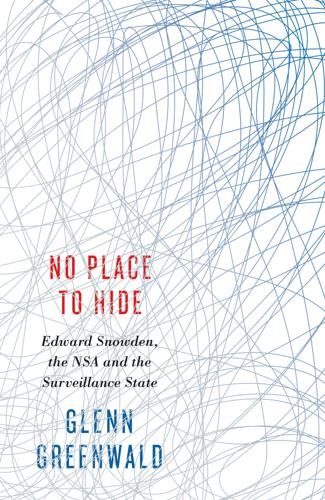
No Place to Hide: Edward Snowden, the NSA, and the U.S. Surveillance State
by
Glenn Greenwald
Published 12 May 2014
The next day, I flew from Rio to JFK on the overnight flight, and by 9:00 a.m. the following day, Friday, May 31, I had checked in to my Manhattan hotel and then met Laura. The first thing we did was go to a store to buy a laptop that would serve as my “air gapped machine,” a computer that never connected to the Internet. It is much more difficult to subject an Internet-free computer to surveillance. To monitor an air gapped computer, an intelligence service such as the NSA would have to engage in far more difficult methods, such as obtaining physical access to the computer and placing a surveillance device on the hard drive. Keeping the computer close at all times helps prevent that type of invasion.
…
Laura had given me a five-minute tutorial on the secure computer system in the car and said she intended to sleep on the plane. She handed over the thumb drive and suggested that I start looking at her set of documents. Once we arrived in Hong Kong, she said, the source would ensure I had full access to my own complete set. After the plane took off, I pulled out my new air gapped computer, inserted Laura’s thumb drive, and followed her instructions for loading the files. For the next sixteen hours, despite my exhaustion, I did nothing but read, feverishly taking notes on document after document. Many of the files were as powerful and shocking as that initial PRISM PowerPoint presentation I had seen back in Rio.
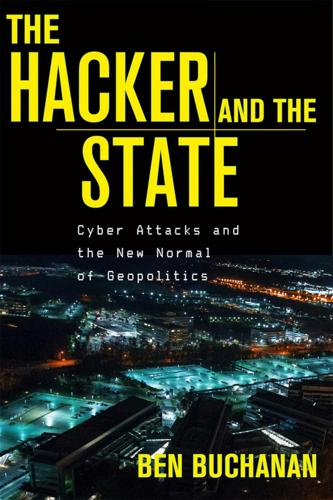
The Hacker and the State: Cyber Attacks and the New Normal of Geopolitics
by
Ben Buchanan
Published 25 Feb 2020
The first part of the digital reconnaissance mission was simple to outline but hard to do: get inside Natanz. Because the computers that controlled the centrifuges were not connected to the internet, the hackers could not reach them directly; in the parlance of cybersecurity researchers, these systems were “air gapped” from the internet. To defeat this protection, Fanny’s creators designed the code as a worm, meaning that it could spread itself from computer to computer on its own, without any real-time direction from its creators. Fanny was able to spread autonomously thanks to some previously unknown vulnerabilities in key components of Windows.
…
Once on board the newly infected machine, Fanny could spread itself to other machines. Before long, exponential growth would dictate that the worm reached a large number of targets, from which the hackers could gather information via a disguised command-and-control system. Eventually, someone carried Fanny across the air gap, enabling the worm’s creators to gather information on the targets of their planned attack; it is unknown if human intelligence sources played a role in this infection.8 Without this extensive reconnaissance, the Stuxnet attack would have been impossible. Even with a more detailed understanding of how the Iranians configured their centrifuges, the attackers had substantial work to do before they could launch their sabotage effort.
…
Later versions had much more power to spread themselves from one computer and network to the next, eventually deploying no fewer than eight different propagation mechanisms.12 Infecting a broad range of computers, especially within contractors for Iran’s nuclear program, increased the odds that Stuxnet would cross the air gap and reach the centrifuges. Five contractors appear to have been the initial targets, the patient zeroes who unleashed the wider infection.13 Sure enough, Stuxnet eventually made its way into Natanz. Stuxnet’s creators programmed different versions of the code to talk to one another like gossiping teenagers.
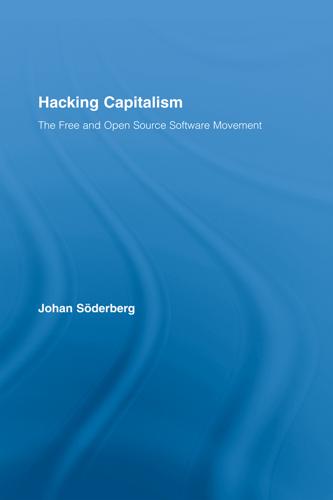
Hacking Capitalism
by
Söderberg, Johan; Söderberg, Johan;
Researchers in the field do not mumble about the purpose of their work: ”The need to authenticate ourselves to machines is ever increasing in today’s networked society and it is necessary to close the air gap between man and machine to secure our transactions and networks.”52 Software allows flexibility in design that approaches surgical precision. This technique of near absolute control is limited only by the ‘air gap’ left between the body and the virtual grid. But the rewards from regulating the behaviour of terrorists, criminals, counterfeiters, consumers, workers, citizens and immigrants are very compelling, and thus the motivation to close the air gap is equally so. A closed air gap would mean no escape from capital’s transactions and capital’s networks.

The Coming Wave: Technology, Power, and the Twenty-First Century's Greatest Dilemma
by
Mustafa Suleyman
Published 4 Sep 2023
Think of containment, then, as a set of interlinked and mutually reinforcing technical, cultural, legal, and political mechanisms for maintaining societal control of technology during a time of exponential change; an architecture up to the task of containing what would have once been centuries or millennia of technological change happening now in a matter of years or even months, where consequences ricochet around the world in seconds. Technical containment refers to what happens in a lab or an R&D facility. In AI, for example, it means air gaps, sandboxes, simulations, off switches, hard built-in safety and security measures—protocols for verifying the safety or integrity or uncompromised nature of a system and taking it offline if needed. Then come the values and cultures around creation and dissemination that support boundaries, layers of governance, acceptance of limits, a vigilance for harms and unintended consequences.
…
The ultimate control is hard physical control, of servers, microbes, drones, robots, and algorithms. “Boxing” an AI is the original and basic form of technological containment. This would involve no internet connections, limited human contact, a small, constricted external interface. It would, literally, contain it in physical boxes with a definite location. A system like this—called an air gap—could, in theory, stop an AI from engaging with the wider world or somehow “escaping.” Physical segregation is just one aspect of transforming technical safety architecture to meet the challenge of the next wave. Taking the best of what’s out there is a start. Nuclear power, for instance, gets a bad rep thanks to well-known disasters like Chernobyl and Fukushima.
…
Giving off light with a wavelength between 200 and 230 nanometers, close to the ultraviolet spectrum, they can kill viruses while not penetrating the outer layer of the skin: a powerful weapon against pandemics and the spread of disease more widely. And if the COVID-19 pandemic taught us one thing, it’s the value of an integrated, accelerated approach across research, rollout, and regulation for novel vaccines. In AI, technical safety also means sandboxes and secure simulations to create provably secure air gaps so that advanced AIs can be rigorously tested before they are given access to the real world. It means much more work on uncertainty, a major focus right now—that is, how does an AI communicate when it might be wrong? One of the issues with LLMs is that they still suffer from the hallucination problem, whereby they often confidently claim wildly wrong information as accurate.

When Computers Can Think: The Artificial Intelligence Singularity
by
Anthony Berglas
,
William Black
,
Samantha Thalind
,
Max Scratchmann
and
Michelle Estes
Published 28 Feb 2015
The first issue would be to decide exactly when the box should be sealed. There are already a number of semi-intelligent agents that have access to the internet The second issue is that having an “air gap” that separates the machine from the internet is not enough because a machine needs to interact with the world at some level. The Stuxnet virus managed to destroy Iran’s nuclear program despite an air gap that was in place. A more fundamental issue is that a hyper-intelligent computer would be very intelligent, and so it would be good at convincing its jailers to release it. If there were several artificial intelligences locked in boxes then only one of them would need to escape.
…
It caused the centrifuges to alternately run too fast and too slow, which caused them to burn out relatively quickly. Stuxnet also perverted the software-based centrifuge monitoring system so that it told the Iranians that the centrifuges were spinning at the correct speeds even though they were not. The Iranians instigated an “air gap” between computers that controlled the centrifuges and other computers that could be connected to the internet. However, they still needed to get code and data on and off the centrifuge computers, which they did using USB memory sticks (“thumb drives”). Having infected computers that were attached to the internet, Stuxnet copied itself onto the thumb drives.
…
Modern anti-virus software needs to be much more intelligent in order to detect malware, but a substantial amount of malware remains undetected, and the anti-virus software can also attack normal, good software. Stuxnet was not intelligent in the sense of being an AGI, but it was autonomous in the sense that once it was released into the wild, it behaved in ways that its authors could not predict and control. Stuxnet could not call home when working in cognito behind an air gap, so it just did what it thought was best. That is how it escaped from the centrifuges and was eventually detected. As to the Iranian centrifuges, it is estimated that Stuxnet had destroyed about 20% of them and set the Iranian program back by several months. Stuxnet is gone, and the centrifuges replaced, and output actually increased slightly during 2010.

The End of Secrecy: The Rise and Fall of WikiLeaks
by
The "Guardian"
,
David Leigh
and
Luke Harding
Published 1 Feb 2011
Or 260,000 state department cables from embassies and consulates all over the world, explaining how the first world exploits the third, in detail, from an internal perspective?” Manning confessed: “The air gap has been penetrated.” The air gap is computer jargon, in this context, for the way the military internet is kept physically separate, for security reasons, from civilian servers, on which the ordinary commercial internet runs. Lamo prompted him: “How so?” “Let’s just say ‘someone’ I know intimately well has been penetrating US classified networks, mining data like the ones described, and been transferring that data from the classified networks over the ‘air gap’ onto a commercial network computer: sorting the data, compressing it, encrypting it, and uploading it to a crazy white-haired Aussie who can’t seem to stay in one country very long.”
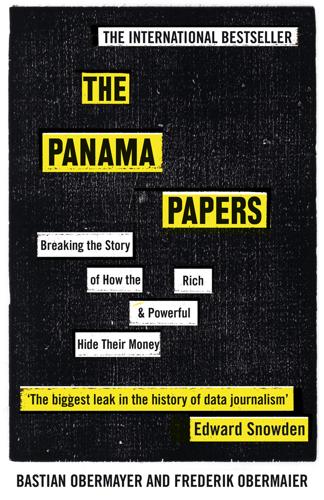
The Panama Papers: Breaking the Story of How the Rich and Powerful Hide Their Money
by
Frederik Obermaier
Published 17 Jun 2016
Its wireless local area network (WLAN) is deactivated, and no LAN cable will ever penetrate its casing. This is known as an ‘air gap’. One of the many lessons of the Snowden leaks is that a computer is only relatively secure from hackers if it has never been connected to the Internet, i.e. if an air gap separates it from other systems. Intelligence services are now able to control even switched-off mobile phones, so it’s a piece of cake for them to hack into a computer that has been connected to a WLAN. To bridge an air gap, however, a secret service agent would have to have physical access to the relevant computer, which would mean getting past the security guards at the entrance to the Süddeutsche Zeitung’s offices.

Genius Makers: The Mavericks Who Brought A. I. To Google, Facebook, and the World
by
Cade Metz
Published 15 Mar 2021
At one point, he said: “Nothing in the DoD should ever be fielded going forward without built-in AI capability.” At least to the Googlers who arranged the contract, it seemed like the company would be a vital part of this long haul. But first, Google had to build software for what was called an “air gap” system—a computer (or network of computers) that was literally surrounded by an air gap, so it isn’t connected to any other network. The only way to get data into such a system is through some sort of physical device, like a thumb drive. Apparently, the Pentagon would load its drone footage onto this system, and Google needed a way of accessing this data and feeding it into a neural network.
…
Navy, 15–19 and machine learning, 48 single-layer network design, 36–37 Perceptrons (Minsky and Papert), 25, 33–34, 44, 194 pharmaceutical industry, deep learning’s ability to help the, 181–83, 271 photo manipulation, 209–11 photo-realistic faces, 210 Pichai, Sundar, 216–17, 241, 243, 263–65 Pinker, Steven, 266–67 Pomerleau, Dean, 43–44, 49, 137, 256–57 pornography, 231 Poulson, Jack, 249, 250 Principles of Neurodynamics (Rosenblatt), 22–23 privacy concerns GDPR (General Data Protection Regulation), 248 medical data from the Royal Free NHS Trust shared with DeepMind, 188 Progressive GANs, 210 Project Mack Truck, 138–39 Project Marvin, 83 Project Maven building a system for identifying drone strike targets, 240 contract with Google, 243 Google employee petition against, 247–50 meeting with Google, 240–43 Puchwein, Peter, 284–85 QSAR (quantitative structure-activity relationship), 182–83 Quake III (game), 295–97 Raji, Deborah, 230–32, 236–38 RankBrain, 139 Ranzato, Marc’Aurelio, 89, 124–27 Rashid, Rick, 130 Rebooting AI (Marcus), 270 Redmond, Michael, 174 reinforcement learning, 111–12, 113, 280, 309–10 research expense of recruiting and retaining the talent pool, 132 freely traded building blocks based on Linux, 131 immigration policies’ effect on foreign talent, 207–08 increased investments in, 136, 138–40 open research concept, 127–28, 129–32 Research in Motion (RIM), 75 robotics ABB robotics contest, 283–84 Amazon contest for warehouse picking, 278–79 the Arm Farm, 279–81 Google Brain robotics group, 279–81 learning human movement, 279–81 programming behavior and skills, 277 robots using dreaming to generate pictures and spoken words, 200 Rubik’s Cube demonstration, 276–78, 281, 297–98 use of Covariant’s automation technology in a Berlin warehouse, 284–85 Rosenblatt, Frank criticism of backpropagation, 38 death, 26–27 education and training, 17 Mark I machine development, 18 Perceptron machine demonstration, 15–19 research efforts, 25–26, 34, 36 rivalry with Marvin Minsky, 21–22, 24–25 Rubik’s Cube demonstration at OpenAI, 276–78, 281, 297–98 Rumelhart, David, 37–39, 97 Sabour, Sara, 208, 305 Salakhutdinov, Russ, 63 Schmidhuber, Jürgen, 59–60, 141–42 Schmidt, Eric, 173, 182, 216, 217, 220, 225, 242 Schroepfer, Mike (“Schrep”), 120, 123, 126, 167–69, 254–55, 257, 258–60 Science (journal), 105 Scott, Kevin, 85–86 security concerns adversarial attacks, 212–13 “air gap” systems, 246–47 medical data from the Royal Free NHS Trust shared with DeepMind, 188 Sedol, Lee, 171–72, 174–78, 216 Segal, Adam, 208 Segura, Marc, 284 Sejnowski, Terry, 29, 39–40, 49–50, 65 self-belief, 293–94 self-driving vehicles ALVINN project, 43–44, 53 Chauffeur project, 137–38, 142 China’s ability to develop, 226–27 exaggerated claims about, 271 Qi Lu’s proposal to Microsoft, 197–98 at Tesla, 155–56 using deep learning, 137–38 Sequence to Sequence paper on machine translation, 183 Shanahan, Patrick, 246 Silicon Valley scale, 293–94 self-belief and conviction, importance of, 293, 306–07 venture capital firms, 160–61 Silver, David AlphaGo project, 171, 173–74, 175, 198 artificial intelligence research, 104–05 as cofounder of Elixir, 103 and Demis Hassabis, 101–02, 103, 104–05 Simon, Herbert, 22, 288 Singhal, Amit, 83–84, 139 the Singularity Summit, 107–09, 325–26 SNARC machine, 21 speech recognition and Android smartphones, 77–79 deep learning and neural speech recognition, 67–68 Google Duplex technology, 265–66 Li Deng’s research on, 66–67, 218 speed of technological progress, 60 SRI (Stanford Research Institute), 20, 24 Stanford University, 57, 85 StarCraft (game), 296–97 statistical translation, 55–56 Suleyman, Mustafa (“Moose”), 107, 115–16, 157–58, 186–88, 244, 248, 294–95, 300–01 superintelligence, 105–06, 153, 156–60, 311 Superintelligence: Paths, Dangers, Strategies (Bostrom), 153 surveillance.
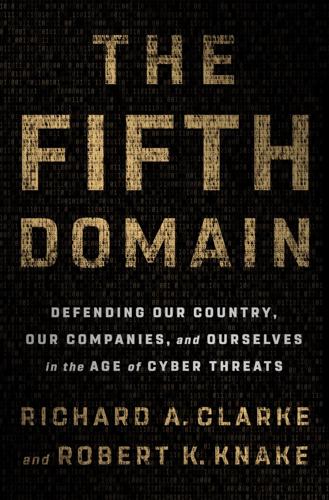
The Fifth Domain: Defending Our Country, Our Companies, and Ourselves in the Age of Cyber Threats
by
Richard A. Clarke
and
Robert K. Knake
Published 15 Jul 2019
Dan Coats, the Director of National Intelligence and a former Republican Senator, described the Russian attacks on the U.S. electrical grid as being so severe that, figuratively, “the warning lights are blinking red.” In background briefings that followed Coats’s statement, government officials explained that the Russians had “jumped the air gap,” which the power grid companies contended they had created between their internet-connected systems and the actual controls of the power networks. In point of fact, few companies had actually isolated their controls. There was almost always a path from the internet to the company’s intranet, and another path from there to the grid controls.
…
In their annual threat assessment to Congress, the agency heads wrote that Russia had the ability to disrupt the U.S. power grid and that China had the capability to disrupt the U.S. natural gas pipeline system (upon which much of the power grid relies). These were not theoretical capabilities, the agencies made clear. These were swords of Damocles hanging above America, swords that could be dropped at any time. Russia’s hackers had allegedly gone after the companies that supply parts to or do maintenance on the grid control side of the air gap. By compromising those systems, the attackers could gain the log-in credentials of people authorized to have access to the control network. Often that access would be remote, over virtual private networks (VPNs) running on top of the internet. The Russians could then plug into the grid’s control.
…
Then they could move into the systems that display the state of the grid on big monitors in control rooms and send instructions to the thousands of devices in the field. If all of that sounds a little familiar to you, maybe you read speculation about how the United States had attacked the Iranian controls for the nuclear centrifuges at Natanz. The Iranians had basked confidently in the assurance that their control network was also “air gapped” from the internet. Not satisfied with the security provided by firewalls, the Iranians had sought to protect the plant from U.S. or Israeli cyberattack by having no internet connection anywhere in the complex. The United States attacked, according to some experts, by infiltrating the Stuxnet software into devices brought into the building by contractors, perhaps on laptops or printers.
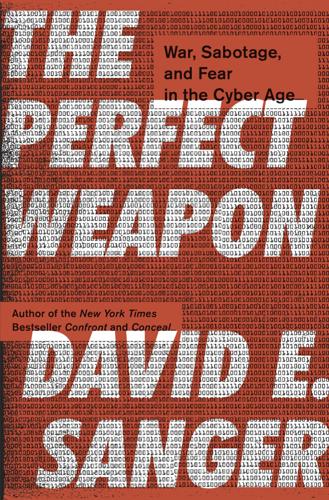
The Perfect Weapon: War, Sabotage, and Fear in the Cyber Age
by
David E. Sanger
Published 18 Jun 2018
Twice before the Israelis had seen threatening nuclear projects under way, one in Iraq, the other in Syria. They had destroyed them both. Olympic Games was a way to keep the Israelis focused on crippling the Iranian program without setting off a regional war. But getting the code into the plant was no easy task. The Natanz computer systems were “air gapped” from the outside, meaning they had no connections to the Internet. The CIA and the Israelis endeavored to slip the code in on USB keys, among other techniques, with the help of both unwitting and witting Iranian engineers. With some hitches, the plan worked reasonably well for several years. The Iranians were mystified about why some of their centrifuges were speeding up or slowing down and ultimately destroying themselves.
…
From Hawaii, not far from Pearl Harbor and the US Pacific Command, the NSA was deploying its very best cyberweapons against its most sensitive targets, including North Korea’s intelligence services and China’s People’s Liberation Army. The weapons ranged from new surveillance techniques that could leap “air gaps” and penetrate computers not connected to the Internet to computer implants that could detonate in time of war, disabling missiles and blinding satellites. While the American public and much of the media were transfixed by the image of a “Big Brother”—tracking not only the numbers they call but the trail of digital dust left by the smartphones in their pockets—the most revealing documents in Snowden’s trove showed the vast ambitions of the nation’s new cyber arsenal.
…
In late 2013, Der Spiegel published the “ANT catalog,” an equipment catalog that James Bond might have admired. Starting in 2008 or so, the NSA began making use of new tools designed to steal or alter data in a computer even if it is not connected to a network—exactly what it did in Iran to get past the “air gap” that separated the Natanz plant from the digital world. The most ingenious of the devices relied on a covert channel of low-frequency radio waves transmitted from tiny circuit boards and USB keys inserted surreptitiously into the target computers. Getting the equipment into the computers required, of course, that the United States or one of its allies insert the hardware into the devices before they were shipped from the factory, divert them while they were in transit, or find a stealthy spy with a way to gain access to them—no easy task.
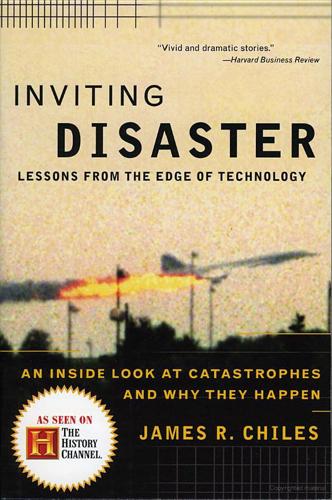
Inviting Disaster
by
James R. Chiles
Published 7 Jul 2008
That’s basically how the booster segments went together at Kennedy: pipes joined end to end, with each rim-and-slot junction held fast by 177 steel pins. For an ordinary pipeline this would have been fine, but not for the high-powered, hot-firing boosters. One challenge was that at each field joint a thin air gap remained between the solid fuel castings in each segment. Without some precautions, flame would fill this gap during a launch and attack the half-inch-thick steel of the booster’s outer casing. To keep the flame at the core of the booster where it belonged, the field joints had heat-resistant putty to close off the gap between the fuel castings, and two rubber O-rings fitted into the rim-and-slot arrangement as a final seal.
…
Here, nitroglycerine (technically, “ethylene glycol dinitrate”) leaves the nitrator as milky-white droplets in a stream of water and flows down a covered trough to another building for separating and washing. On the inside, these buildings have the look of dairy operations: clean concrete floors, whitewashed walls, and stainless-steel pipes and vats. At the last point of the process, fresh nitroglycerine flowed from an elbow-shaped tube and gurgled peacefully down a drainpipe, with a few inches of air gap between. Whitesell said it’s safer than confining it in a tube, where sudden compression of the liquid could set it off, perhaps by someone shutting or opening a valve too quickly. Because nitroglycerine is a thick liquid that always holds some trapped air bubbles, if the liquid is compressed quickly the air in the bubbles heats up, and this heat can set off a runaway reaction that detonates an entire batch.
…
Jeff Pigott stretched out a metal rod and struck a foot-long arc with the power line, then clamped on a temporary cable that would maintain a good electrical connection between the helicopter’s frame and the line. This is called bonding to the wire. The reason for the arc is that the helicopter has a lower electrical potential than the power line, and current wants to jump across the air gap to equalize them, something like the way that water seeks its own level. That’s why the crew members can sit on metal platforms and ride in a metal helicopter: for this brief time, all the people in the helicopter are wearing the full voltage of the transmission line and are safer than they would be by trying to insulate themselves from it somehow.

Our Final Invention: Artificial Intelligence and the End of the Human Era
by
James Barrat
Published 30 Sep 2013
They carry at least three underwater lights and at least three knives, in case of entanglement. Even so, cave diving remains the world’s most dangerous sport. Triple or quadruple containment measures could confound a Busy Child, at least temporarily. Consider a Busy Child reared in a sandbox within an apoptotic system. The sandbox of course would be separated by an air gap from any network, cabled or wireless. A separate individual human would be in charge of each restriction. A consortium of developers and a fast-response team could be in contact with the lab during critical phases. And yet, would this be enough? In The Singularity Is Near, after recommending defenses to AGI, Kurzweil concedes that no defense will always work.
…
In Iran, one or more spies carried flash drives infected with three versions of Stuxnet into secure plants. Stuxnet can travel across the Internet (though at a half megabyte of code it’s much larger than most malware) but in this case it did not, initially. Typically, in the plants, one computer was attached to one controller and an “air gap” separated the computer from the Internet. But one flash drive could infect multiple PCs, or infest an entire local area network (LAN) by plugging into one node. At the Natanz plant PCs were running software that permits users to visualize, monitor, and control plant operations from their computers.

Home Maintenance Checklist: Complete DIY Guide for Homeowners: 101 Ways to Save Money and Look After Your Home
by
Ian Anderson
Published 6 Mar 2019
However, if you’ve a wall that’s rained on whatever you do, or a chimney getting a beating every time it rains, then by all means go for a breathable silicone treatment, with one caveat. Do it at the end of the summer after a long, long period of dry weather to ensure the brickwork is bone dry to start with. To stop water getting into the wall, consider covering it up for a while (with an air gap to allow evaporation) before treating it. Always follow the instructions as products vary and find one that’s breathable for best results. In addition to protecting your masonry from water, you’ll need to check it annually for movement damage. Large cracks can be serious if caused by subsidence which is movement associated with damage from nearby large trees or leaking drains.
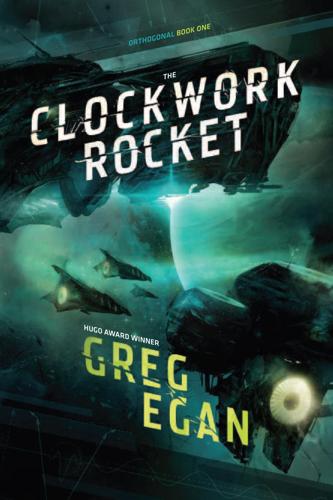
The Clockwork Rocket
by
Greg Egan
Published 30 Jun 2011
We’ve done tests to rule that out if all goes well—but we can’t test the most extreme case; there’s no scale model that will tell us what happens when a whole mountain of sunstone sits and burns from below, for days.” Eusebio rubbed his eyes. “All right, if I grant you all of that… what do you propose?” “An air gap, all around the mountain.” “An air gap?” “A trench,” Yalda explained. “As deep as the lowest engines, and maybe a stroll wide. Then we dig channels under the engines so that all the exhaust gas can escape freely. That would make a big difference to the heat build-up in the rock, if the engines end up running in place.”

Click Here to Kill Everybody: Security and Survival in a Hyper-Connected World
by
Bruce Schneier
Published 3 Sep 2018
This might be regarded as heresy in today’s race to network everything, but large, centralized systems are not inevitable. Technical and corporate elites may be pushing us in that direction, but they really don’t have any good supporting arguments other than profit maximization. Disconnecting can happen in several ways. It can mean creating separate “air gapped” networks. (These have vulnerabilities as well, and are not a security panacea.) It can mean going back to non-interoperable systems. And it can mean not building connectivity into systems in the first place. There are also incremental ways to do this. We can enable local communications only. We can design dedicated devices, reversing the current trend of turning everything into a general-purpose computer.
…
, 136 Electronic Privacy Information Center, 223 e-mail, 153 encryption, 109, 114, 169, 170–72 bypassing, 171, 193 by default, 197 end-to-end, 167, 170–71, 175 limiting, 197–99 as munition, 197 ubiquitous, 171–72, 199 warrant-proof, 194–95 end-to-end principle, 119 end users, 23, 130 Enron, 127, 128 EPA, formation of, 183 Equifax, 37, 79, 106, 124, 125, 128, 130, 180, 187 espionage: cyberespionage and cyberattack, 72, 81 international, 66–68, 71, 171–72 Estonia, national ID card of, 31, 48 ETERNALBLUE, 164–65 EU, regulations in, 184–88 European Safety and Security Engineering Agency, 149 Evans, Lord John, 196 FAA: database of near misses, 177 jurisdiction of, 145–46 Facebook, 190 censorship by, 60 controls exerted by, 61, 62 and EU regulation, 185, 186 identification systems in, 199 surveillance via, 57, 58, 169, 196 Fair Credit Billing Act (1974), 100 Fancy Bear (Russian intelligence unit), 46 Farook, Syed Rizwan, 174 FBI: backdoors demanded by, 172, 174, 193–97, 198, 220 and hacking back, 204 IMSI-catchers used by, 168–70 and law enforcement, 173–76 Microsoft vs., 190 wiretapping by, 168 FDA, 137, 145, 151 Federal Communications Commission (FCC), 149 FedRAMP, 123 Felten, Ed, 223 financial crisis (2008), 125–26 FinFisher, 64–65 FireEye, 42 flash crash, 85 Ford Foundation, 224 Fort Hood shooting (2009), 202 Freeh, Louis, 193 FTC, 148, 154 Gamma Group, 30, 65 Gartner tech analyst firm, 101 GDPR (General Data Protection Regulation) [EU], 151, 184–88 Geer, Dan, 163, 217 George, Richard, 170 Gerasimov Doctrine, 71 Germany, BSI and BND in, 173 GGE (Group of Governmental Experts), UN, 158 Gmail, 153 Goldsmith, Jack, 163 Google: Advanced Protection Program, 47 censorship by, 60 controls exerted by, 61, 62 and EU regulations, 185 identification systems in, 199 lobbying by, 154 state investigation of, 187 surveillance via, 58–59, 169, 196 governments, 144–59 asymmetry between, 91–92 censorship by, 60 and defense over offense, 160–79 functions of, 10 and industry, 176–79 information sharing by, 176 and infrastructure, 117 insecurity favored by, 57 international cooperation, 156–59 international espionage, 171–72 jurisdictional arbitrage, 156 and liability law, 128–33 lobbying of, 154–55 mistrust of, 208, 220 policy challenges in, 99, 100–101, 192–206 regulatory bodies, 121, 144, 150–52, 156–59, 192 and security standards, 167 supply-chain attacks on, 87–89 surveillance by, 64–68, 172, 195, 208 vulnerability disclosure by, 163 Greer, John, 126 GTT Communications, 115 Gutenberg, Johannes, 24 hacking: catastrophic, 9, 16, 217 class breaks, 33, 95 contests in, 85 costs of, 102–3 cyberweapons in, 73 increasing threat of, 79 international havens of, 156 through fish tank, 29 hacking back, 203–4 HackingTeam, 30, 45, 65 HAMAS, 93 Hancock Health, 74 harm, legal definition of, 130 Harris Corporation, 168 Hathaway, Melissa, 114 Hayden, Michael, 170 Healey, Jason, 158, 160 Heartbleed, 21, 114–15 Hello Barbie (doll), 106 Hilton Hotels, 185 Hizballah, 93 Honan, Mat, 29 Hotmail, 153 HP printers, 62 Huawai (Chinese company), 87 Human Rights Watch, 223 humans, as system component, 7 IBM, 33 iCloud, 7 hacking of, 78 and privacy, 190 quality standards for, 111, 123, 135 Idaho National Laboratory, 79, 90 identification, 51–55, 199–200 attribution, 52–55 breeder documents for, 51 impersonation of, 51, 75 identity, 44 identity theft, 50–51, 74–76, 106, 171 Ilves, Toomas Hendrik, 221 iMessage, 170 impersonation, 51, 75 IMSI (international mobile subscriber identity), 168–70 industry lobbying groups, 183 information asymmetries, 133–38 information security, 78 infrastructure: critical, use of term, 116 security of, 116–18 Inglis, Chris, 28 innovation, 155 insecurity, 56–77 cost of, 126 criminals’ benefit from, 74–77 and cyberwar, 68–74 insurance industry, 132–33 integrity, attacks on, 78–82 intellectual property theft, 66, 72–73, 75 interconnections, vulnerabilities in, 28–30, 90 International Organization for Standardization (ISO), 140 Internet: advertising model of, 57, 60 changing concepts of, 5, 218 connectivity of, 5, 91, 105–6 demilitarization of, 212–15 dependence on, 89–90 development phase of, 22–23, 157 explosive growth of, 5, 146 global, 7, 16, 161 governance model of, 157 government regulation of, 152–55 horizontal growth of, 146 industry standards for, 23, 122–23 lack of encryption on, 170–72 maintenance and upkeep of, 143 nonlinear system of, 211 private ownership of infrastructure, 126 resilience of, 210–12 as social equalizer, 214, 217 surveillance and control via, 64–68 viral dissident content on, 158 Internet+: authentication in, 49–51 coining of term, 8 cybersecurity safety board for, 177 risks and dangers of, 217–18 simultaneous vulnerabilities in, 94 Internet+ security: closing the skills gap, 141–42 correcting information asymmetries in, 133–38 correcting misaligned incentives in, 124–28 current state of, 9 defense in, see attack vs. defense enforcement of, 121 funding maintenance and upkeep in, 143 incentives and policy solutions for, 100–103, 120–43 increasing research in, 142–43 liabilities clarified for, 128–33 litigation for, 121 meanings of, 15–17 and privacy, 9 public education about, 138–41 public policies for, 120–21 standards for, 122–23, 140–41, 157–59 as wicked problem, 11, 99 Internet Engineering Task Force (IETF), 23, 167 Internet of Things (IoT), 5 as computerization of everything, 7 Cybersecurity Improvement Act, 180 in developmental stage, 8 patching of, 37–38 smartphone as controller hub for, 48 Internet Policy Research Initiative, MIT, 224 Investigatory Powers Act (UK), 195 iPhones, 3–4 encryption on, 174, 197 new versions of, 42–43 IPsec, 167 Iran: cyberattack by, 71, 116, 178 hackers in, 45 Stuxnet attack on, 79 Iraq, 212 ISIS, 69, 93 ISPs: connections via, 113–14 Tier 1 type, 115 ISS World (“Wiretappers’ Ball”), 65 jobs, in cybersecurity, 141–42 John Deere, 59–60, 62, 63 Joyce, Rob, 45, 53, 54, 164, 166 Kaplan, Fred, 73 Kaspersky Lab, 29, 74, 87 Kello, Lucas, 71 Kelly, John, 66 Keurig coffee makers, 62 key escrow, 194 KICTANet, Kenya, 214 labeling requirements, 134–35 LabMD, unfair practices of, 130–31 Landau, Susan, 175, 176, 223 Las Vegas shooting (2017), 202 Ledgett, Rick, 163–64, 166 lemons market, 134 Lenovo, 187 letters of marque, 204 Level 3 ISP, 115 liability law, 125, 128–33 Liars and Outliers (Schneier), 101, 209 Library of Congress, 42 license plate scanners, 201 linear systems, 210 Lloyd’s of London, 90 Lynn, William, 198 machine learning, 7, 82–87 adversarial, 84 algorithms beyond human comprehension, 111–12 autonomous, 82–83, 85 Maersk, 71, 94 malware, 26, 30, 196 man-in-the-middle attacks, 49, 169 market economics, and competition, 6 mass shootings, 202 May, Theresa, 197 McConnell, Mike, 198 McVeigh, Timothy, 202 medical devices: bugs in, 41 and government regulations, 151 hacking, 16 and privacy, 151 Meltdown vulnerability, 21 Merkel, Angela, 66 metadata, 174 Microsoft, 57, 190 Microsoft Office, new versions of, 42, 43 military systems, autonomous, 86 Minecraft video game, 94 miniaturization, 7 Mirai botnet, 29, 37, 77, 94, 130 money laundering, 183 monocultures, vulnerabilities in, 31 Moonlight Maze, 66 “movie-plot threats,” 96 Mozilla, 163 Munich Security Conference, 70 My Friend Cayla (doll), 106 Nader, Ralph, Unsafe at Any Speed, 182 National Cyber Office (NCO), 146–50 National Cyber Security Centre (UK), 173 National Cybersecurity Safety Board (proposed), 177 National Institute of Standards and Technology (NIST), Cybersecurity Framework of, 123, 147 National Intelligence Council, 211–12 National Science Foundation (NSF), 147 National Security Council, 163 National Security Strategy, 117 National Transportation Safety Board, 177 Netflix, 148 net neutrality, 61, 119 network effect, 60 networks: “air gapped,” 118 collective action required of, 23–24 end-to-end model of, 23 firewalls for, 102 iCloud, 111 secure connections in, 113–14, 125 and spam, 100 telephone, 119 New America, 223 New York Cyber Task Force, 213 NOBUS (nobody but us), 164–65, 169, 170 norms, 157–59 North Korea: cyberattack by, 71 cybercrimes by, 76, 157 hacking by, 54, 71, 78 threats by, 70, 72 Norwegian Consumer Council, 105–6 NotPetya malware, 71, 77, 89, 94 NSA: attribution in, 53–55 BULLRUN program, 167–68 credential stealing by, 45 cyberattack tools of, 165–67 on cybersecurity, 86 cyberweapons stolen from, 73 disclosing and fixing vulnerabilities, 162–67 encryption circumvented by, 171, 193 intelligence-gathering hacks by, 116, 118 missions of, 160–61, 172 mistrust of, 208 reorganization (2016) in, 173 and security standards, 167–70 splitting into three organizations, 172–73 supply-chain attacks by, 87 surveillance by, 65, 66–67, 190, 202 NSO Group, 65 Nye, Joseph, 157 Obama, Barack, 66, 69, 92, 117, 163, 180, 208 Ochoa, Higinio O.

Concorde: The Thrilling Account of History’s Most Extraordinary Airliner
by
Mike Bannister
Published 29 Sep 2022
The fuel was pumped directly into a sealed section of the wing itself. Each of the thirteen tanks distributed throughout the aircraft was fundamentally a part of the structure. There was no internal lining, even. The piece of rubber hit squarely in the area of Tank Number 5, above the destroyed tyre. The reason for there being a supposed air gap in the tank was to allow for expansion and contraction – be it on account of the medium/long-term effects of temperature change; or the acute, short-term effect of an impact like this. Because, as we now began to suspect, the tank had been 100 per cent full, there had been nowhere for the energy imparted by the rubber to go – no means for it to be dissipated within the fuel.
…
Then, when the over-full light came on, to have closed the valve manually at 97 per cent. If you were tight on fuel, there was a considerable advantage to this because you didn’t have to burn off this additional fuel before take-off. OK, you were up to 97 per cent in some of your critical tanks, but that was all right because you still had that all-important air gap. It was a procedure that wasn’t hard to carry out either – what you had to do was switch a certain combination of pumps and valves, and job done. But what it required was for the flight engineer to monitor the whole process very closely, because now the only thing stopping the fuel going above 97 per cent were his eyes on the panel.

The Kamado Smoker and Grill Cookbook
by
Chris Grove
We removed the vent, sealed the back, top, and bottom of it with a high-temp caulk and then put the vent back on. We also found that in certain positions, the draft door also had a gap. We put shims between the door and door track, which pushed the door into place. Alignment — If the dome lid and base aren’t lined up correctly, you may have air gaps around the gasket that has nothing to do with the gasket being faulty. Do the “dollar bill test” by placing a dollar on the gasket, shutting the dome lid, and then pulling on the dollar bill. You should experience slight resistance. Repeat this around the rim looking for gaps. Consult your manufacturer for specific realignment instructions as these vary from kamado to kamado.

Drone Warfare: Killing by Remote Control
by
Medea Benjamin
Published 8 Apr 2013
In the summer of 2009, US forces discovered “days and days and hours and hours” of drone footage on the laptops of Iraqi militants. A $26 piece of software allowed them to capture the video.28 None of the remote cockpits are supposed to be connected to the public Internet, which means they should be largely immune to viruses and other network security threats. But time and time again, the so-called “air gaps” between classified and public networks have been bridged, largely through the use of discs and removable drives. In late 2008, for example, the drives helped introduce the agent.btz worm to hundreds of thousands of Defense Department computers. Three years later, the Pentagon was still disinfecting machines.

398 DIY Tips, Tricks & Techniques: Practical Advice for New Home Improvement Enthusiasts
by
Ian Anderson
Published 31 Mar 2019
Repairing Old Walls: One Rule Generally, walls built between the fifteenth century and the Second World War walls (in the UK at least) used a lime-based mortar (softer mortar, easily scraped out with a screwdriver or even a fingernail) and are usually solid (i.e. one brick thick/ two half bricks thick, (or more on larger structures), with no air gap or cavity). We touched on this before under maintenance, but it bears repeating; never, ever use a cement-based mortar to repair a wall built using lime-mortar, because it forces moisture inside the wall to evaporate from the brick itself, which then freezes etc. often causing spalling of the brick face, especially the edges...
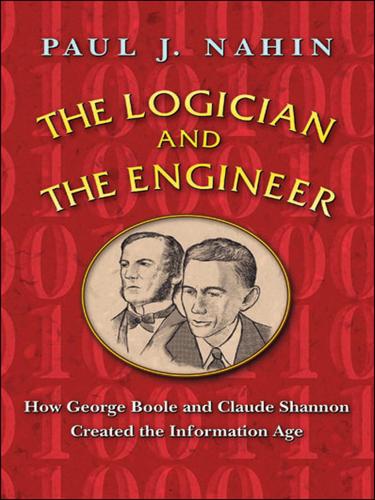
The Logician and the Engineer: How George Boole and Claude Shannon Created the Information Age
by
Paul J. Nahin
Published 27 Oct 2012
Actually, there is a very small current because each of the p and n stuffs contain very low densities of what are called minority charge carriers (holes in p-stuff and electrons in n-stuff are majority charge carriers). That is, there are some electrons in the p-stuff and some holes in the n-stuff and they do move across the junction in a reverse-biased diode. 7. A spark is formed across an air gap when the electric field strength (see the previous note) exceeds something like 75,000 volts/inch. You might wonder how such a strong field can be created between the contacts in a relay circuit in which the power supply voltage is a mere 5 volts; a more advanced discussion than I’ve given here, of the mathematical physics behind what happens in an inductive circuit that is suddenly switched, is in my book The Science of Radio (see note 5), pp. 356–361. 8.
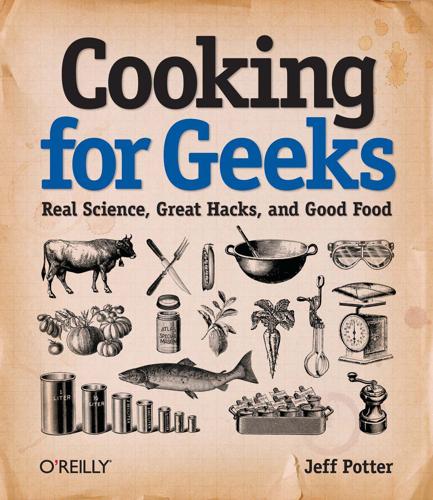
Cooking for Geeks
by
Jeff Potter
Published 2 Aug 2010
The cookie sheet will hold the dry ice/ethanol slurry, and the cutting board will provide insulation between the extremely cold cookie sheet and your countertop. Alternatively, if you have the lid to a Styrofoam container, using the inside, indented part can serve both purposes. Pour a small amount of ethanol onto the bed of crushed dry ice—enough to create a level top. (You can use rubbing alcohol or cheap vodka.) The ethanol will remove any air gap between the pieces of dry ice and the stainless steel griddle, and it won’t cause the dry ice to froth in billowy clouds like water would. Plop the square of stainless steel on top of the ethanol-topped dry ice. It should be a complete contact fit, just like a heat sink on top of a CPU. Spray or coat the top surface of the stainless steel with a nonstick cooking spray, butter, or oil.
…
I broke the glass in my oven door and had to "upgrade" it, although it is cool to have bragging rights to an oven sporting a piece of PyroCeram, the same stuff the military used for missile nose cones in the 1950s. There’s also the issue of how hot the surrounding countertop and cabinetry can get. Commercial stoves are designed for these sorts of temperatures and as a result require a large air gap between the appliance and any combustible materials. Given that an upside-down cast iron pan under a broiler or a wood-fired grill turn out delicious flat-crust pizzas, I’m afraid I have to recommend that you skip the oven overclocking, even if it is fun. Nathan Myhrvold on Modernist Cuisine PHOTO USED BY PERMISSION OF NATHAN MYHRVOLD Nathan Myhrvold, formerly CTO of Microsoft, is among many things an avid cook.
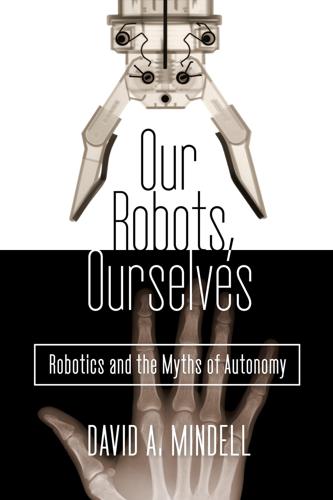
Our Robots, Ourselves: Robotics and the Myths of Autonomy
by
David A. Mindell
Published 12 Oct 2015
So operators set up a separate “mission operations cell”—really just a tent sitting outside the Predator trailer—that took the video feed, digitized it, and inserted it into secure networks for passage to intelligence analysts (with significant loss of video quality). In the Balkans deployments, other than this one video feed, the entire system was separated from global networks by an “air gap.” Target coordinates passed into the control van via floppy disk, or by the “sneaker net” of people walking in and reading numbers. On the receiving end, those watching the video saw a disconnected feed, with little ability for feedback and direction to the vehicle itself and its sensors. Similarly, pilots and sensor operators had little awareness of what they were doing within a larger picture.

Norman Foster: A Life in Architecture
by
Deyan Sudjic
Published 1 Sep 2010
It is a mannerism calculated to show that this is a building that does not share the sensibility of its more conventional stone-clad neighbour, on the side away from the Rogers building, which plays by the old rules. To underscore the point, Foster has put a vertical black line to cut himself off from that building. He does not touch Rogers, his other neighbour, at all. On the other side of the air gap from Foster, Rogers has stuck to what his office does best – romantic modernity. By pulling the structure, stairs and lifts out of the basic envelope, he creates a jagged, picturesque skyline. The piece closest to Foster is wall-to-wall glass, in an elegant concrete frame that is braced by gunmetal grey and stainless steel rods.

Cool: How Air Conditioning Changed Everything
by
Salvatore Basile
Published 1 Sep 2014
But they offered little in the way of actual cooling. And they were useless in bargain basements; as they were completely unventilated spaces, the basements’ heat, combined with their always-combative customers, terrified the novice saleswomen who were forced to work in them. Stores tried to fill the cool-air gap by other means, reasonable or not. Manufacturer and Builder claimed that the department store pneumatic-tube cash system “affords a simple and effective system of ventilation”—but no one believed it, especially the cashiers sitting in front of the tubes. Rather less hygienically, Brooklyn’s Abraham & Straus offered “a barrel constantly making the rounds of the store filled with a cooling beverage,” and Belk Brothers of Charlotte, North Carolina, maintained a barrel filled with ice water at their store’s front entrance; five tin cups were tethered to the barrel for customer convenience.
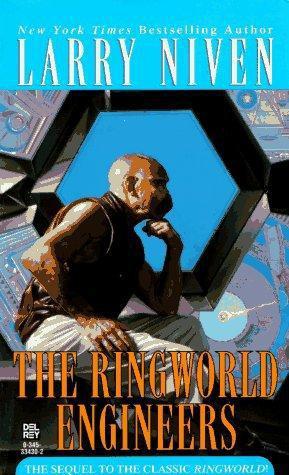
The Ringworld engineers
by
Larry Niven
Published 12 Nov 1985
Louis followed her. His eyes adjusted, and he saw that there were narrow paths among the growths. The fungi ranged from button-size to asymmetrical shapes as tall as Louis’s head, with stalks as thick as his waist. Some were mushroom-shaped, some had no shape at all. A hint of corruption was in the air. Gaps in the sprawl of buildings overhead let through vertical pillars of sunlight, so bright that they looked solid. Frilly yellow fungus fringed in scarlet half smothered an outcropping of gray slate. Medieval lances stood upright, white tipped with blood. Orange and yellow and black fur covered a dead log.

The Big Nine: How the Tech Titans and Their Thinking Machines Could Warp Humanity
by
Amy Webb
Published 5 Mar 2019
The announcement wasn’t part of a strategic realignment on core values within the company; it was a reactive measure, owing to internal blowback concerning the Project Maven debacle—and to a private incident that happened earlier in the year. A group of senior software engineers discovered that a project they’d been working on—an air gap security feature for its cloud services—was intended to help Google win military contracts. Amazon and Microsoft both earned “High” certificates for a physically separate government cloud, and that authorized them to hold classified data. Google wanted to compete for lucrative Department of Defense contracts, and when the engineers found out, they rebelled.

The Domestic Revolution
by
Ruth Goodman
Published 15 Apr 2020
It would have required a combination of adjusting the size and shape of the coal lumps and forming the wood of the initial fire into an open and supportive framework – akin to building a grate out of firewood. As the wood burnt away, discrete lumps of smouldering anthracite would maintain their shape, including the integrity of the air gaps between the lumps, allowing oxygen in to feed the fire. Most other coal would smother itself. George Owen sang his praise for the coal of west Wales, saying it ‘clyngeth not together’. For everyone else, dependent on the many varying grades and types of coal in the rest of the British Isles, burning coal without a grate was a frustrating business.
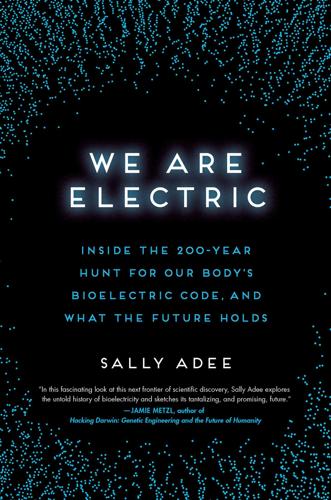
We Are Electric: Inside the 200-Year Hunt for Our Body's Bioelectric Code, and What the Future Holds
by
Sally Adee
Published 27 Feb 2023
This gap is called a synapse, christened the same year the Neuron Doctrine won its progenitors the Nobel. The discovery of a gap between cells that were meant to be transmitting an electrical signal revived a lot of doubts about the still-fragile idea that animal electricity is real and that the nerve impulse is electric. After all, an electric signal can’t travel over an air gap in telegraph wires, so why should it be able to do so in the wires of the nervous system? In 1921, the discovery of chemicals called neurotransmitters, which float across the synapse’s gap, only deepened those doubts. That briefly led to a fight over the nature of the nervous signal between opposing groups of scientists who called themselves the Soups (team chemistry) and those calling themselves the Sparks (team electricity).2 It was like science’s own West Side Story.

This Is for Everyone: The Captivating Memoir From the Inventor of the World Wide Web
by
Tim Berners-Lee
Published 8 Sep 2025
I then attached a small circuit board to each button, to convert its electromechanical output into binary codes that the breadboard logic controllers could read. So I had a terminal. I brought it into the physics lab, and the engineer of the PDP-8 minicomputer allowed me to test it, on the condition that I built an ‘optical isolator’ (a gadget with LEDs and photocells and an air gap) so he could be sure my nasty terminal could not harm his precious computer. Fair! It was neat in a way that throughout this whole process, just as I needed something which I could not build myself, like a transistor or, now, a memory chip that could hold each of the 1,024 characters in my new display, industry produced it at a cost I could afford.
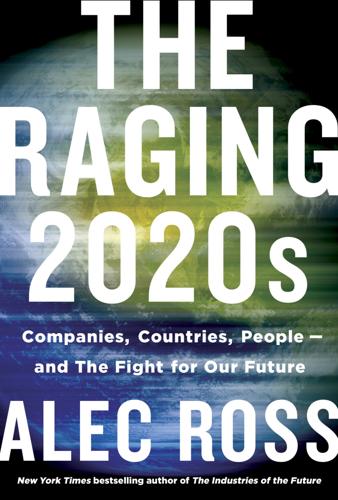
The Raging 2020s: Companies, Countries, People - and the Fight for Our Future
by
Alec Ross
Published 13 Sep 2021
They don’t say ‘what’s good for the United States is good for us.’ They say ‘we’re building a global community.’” But what exactly does this mean? There are obvious ways in which this shift can cause problems, as we saw in the case of international tax avoidance. But there are also ways in which an air gap between companies and the state—so long as it is not abused—can be beneficial and even make for a more stable social contract. When companies are not operating in lockstep with government, they can serve as a check on the abuse of power or a push toward addressing global problems where government might be lagging.
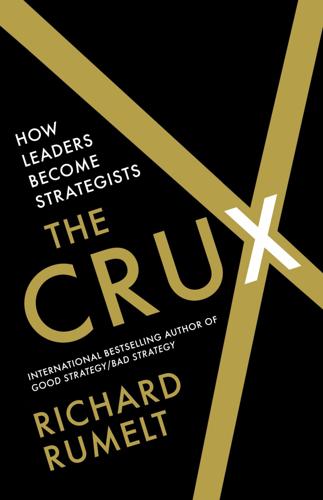
The Crux
by
Richard Rumelt
Published 27 Apr 2022
He was excited by the idea and thought that DelKha could meet or even beat the performance of the Parrot fans. In a traditional motor, the electricity sent to the central rotating element had copper contacts through which the current passed via carbon “brushes.” On a brushless motor, there were no brush contacts, just an air gap. The sequence and timing of the magnetic fields was managed by a microprocessor timing the feed of DC electric power to coils. DelKha put together a task force to work with FlyKo. The DelKha engineers were able to deliver the fan, and FlyKo built a prototype drone. Unfortunately, its inventory of regular R/C airplanes was not selling, and FlyKo had to invoke Chapter 11 bankruptcy.

Visual Thinking: The Hidden Gifts of People Who Think in Pictures, Patterns, and Abstractions
by
Temple Grandin, Ph.d.
Published 11 Oct 2022
The second type of equipment that requires protection includes fully computerized systems that replace human operators. Some examples are robotic arms that stack boxes in factories, and electric trains that move passengers between airline terminals. These systems must be totally isolated from the internet, both connections with cables and wireless connections such as Wi-Fi. Engineers call this an “air gap.” Great care must be taken to never connect a computer with built-in Wi-Fi to industrial and mechanical systems. These systems are always looking for a connection. You may recall that the wireless component in Dick Cheney’s defibrillator was disabled for fear that it would be hacked by terrorists.

The Wires of War: Technology and the Global Struggle for Power
by
Jacob Helberg
Published 11 Oct 2021
Defense Department, calls this “one of the first times you’ve seen conventional ground operations married with cyber activity.”68 Russia was becoming equally aggressive—though its actions were less overt—in the United States. Weeks before the 2008 election, National Security Agency staff stumbled across Russian hackers lurking in the Pentagon’s classified system, SIPRNET. Because of the sensitivity of these networks, the computers were designed to be “air gapped,” meaning they had no connection to the broader Internet. It turned out the Russians had surreptitiously scattered thumb drives infected with malware near a NATO base in Afghanistan, just waiting for an American to pick one up.69 The ploy worked. Forty years before, the Department of Defense had birthed the Internet; now, hostile powers had turned that creation back on the Pentagon itself.
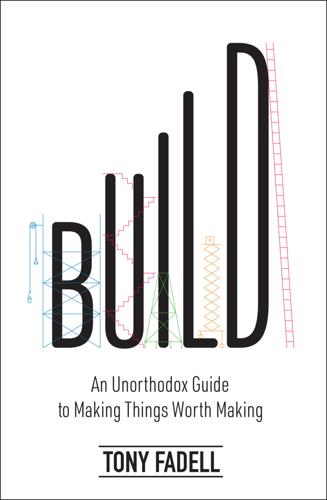
Build: An Unorthodox Guide to Making Things Worth Making
by
Tony Fadell
Published 2 May 2022
Just don’t forget the other factor that can sneak up and kick your ass: time. It will take longer than you think to get funding. Expect it to be a 3–5 month process. It may end up being faster than that—especially in a founder-friendly environment—but I wouldn’t gamble on it. Too many companies wait until they’re about to run out of money, then hit an air gap and are near bankruptcy before desperately grabbing whatever funding they can get. Always start the pitching process when you don’t actually need money. You want to be in a position of strength, not buckling under the pressure and making bad choices. You should also remember to watch out for the holidays—August, Chinese New Year, Thanksgiving through New Year.

Finding the Mother Tree: Discovering the Wisdom of the Forest
by
Suzanne Simard
Published 3 May 2021
The forest floor scraped away, the planting hole plunged into the damp mineral earth below. Just as instructed. By the book. I inserted the roots back into the hole and checked another seedling. And another. Every one of them packed exactly right in a slit made by a shovel and backfilled to eliminate the air gaps, but the root plugs looked embalmed, as if they’d been shoved into a tomb. Not a single root seemed to get what it was supposed to do. None was sprouting new white tips to forage in the ground. The roots were coarse, black, and plunging straight to nowhere. The seedlings shed yellow needles because they were starving for something.

The Long History of the Future: Why Tomorrow's Technology Still Isn't Here
by
Nicole Kobie
Published 3 Jul 2024
Hovertrains looked to use the same principles as hovercraft, floating inches above a fixed track rather than being pulled forward on rails. The train was shaped like a small letter ‘n’, with the track a concrete beam running through – picture a monorail and that’s essentially it. The train is floating, pushed up into the air by fans, though magnets were also investigated. That air gap means there’s less friction, so less power is required to move it forward. Indeed, various reports on hovertrains show they could be pushed by hand once floated. Because of this, early prototypes used a propeller or aircraft engine for propulsion, meaning these were essentially grounded aeroplanes.

The Cobweb
by
Neal Stephenson
and
J. Frederick George
Published 31 May 2005
He took her hand and pressed it against the top of the car, held it there with one hand while he reached around behind her with the other, got her other hand, and put it next to the first. Now he was behind her, wrapped around her like a cape, though he was so big and she so tiny that there was an air gap of several inches between them. Into her ear he said quietly, “I can take care of this if you calm down and do not move. If you take your hands off the car again, I have no idea what is going to happen.” “Well enough,” she said. Clyde released her hands and backed off a few inches. When she did not move, he relaxed and turned his attention to the dog.

Fancy Bear Goes Phishing: The Dark History of the Information Age, in Five Extraordinary Hacks
by
Scott J. Shapiro
To do so, his team built the system in a secured laboratory that only the development group could enter. The machine they coded on—the development machine—was housed in a separate locked room within the lab. That locked room was protected by a cage. Physical access to both the lab and the cage was controlled by a key-card system. Finally, the development machine was “air gapped,” meaning that it was not connected to any network, let alone the internet. These precautions were designed to prevent anyone from inserting a secret backdoor. It took a decade to build the system. By late 1989, the VMM Security Kernel was put in the field to undergo testing at government and aerospace installations.

Spies, Lies, and Algorithms: The History and Future of American Intelligence
by
Amy B. Zegart
Published 6 Nov 2021
98 The result was Stuxnet, the most sophisticated cyber weapon in the world, with code fifty times larger than typical malware.99 The CIA, the NSA, and Israel’s elite cyber Unit 8200 reportedly joined forces.100 Forensics revealed that Stuxnet used four rare and valuable “zero day” vulnerabilities (coding flaws unknown to security researchers or software vendors) to find the precise software operating Iran’s centrifuges, spread inside, hide, and destroy without a trace.101 Still, the operation needed humans. The Natanz computers were “air gapped”—they weren’t connected to the Internet. The U.S.-Israeli team somehow got Iranians inside Natanz to infect the machines with USB drives. Apparently, only some knew they were accomplices.102 Stuxnet would lie in wait and then suddenly spring into action, speeding up or slowing down the spinning centrifuges for a few minutes before hiding again and repeating the operation until the centrifuges tore themselves apart.

Dawn of the Code War: America's Battle Against Russia, China, and the Rising Global Cyber Threat
by
John P. Carlin
and
Garrett M. Graff
Published 15 Oct 2018
One of McConnell’s other efforts was to push for the creation of a new military organization to oversee hacking efforts. The effort received an extra boost when, in the fall of 2008, the Pentagon realized that one of its classified networks had been hacked—the first time an adversary was ever known to have penetrated a classified network, which by their very design were supposed to be “air gapped,” entirely disconnected from the normal internet.* According to journalist Fred Kaplan, “a detailed analysis, over the next few months, confirmed” that a malware-infected thumb drive had been inserted into the classified network. According to Kaplan’s reporting, Russia had seeded infected thumb drives at kiosks in Kabul, including those near NATO’s military headquarters, in the hopes that a cheap American would buy one and then use it at work.34 The effort to defeat the malware on the network, known by the code name BUCKSHOT YANKEE, helped make clear the challenges the military had in securing cyberspace.

Tesla: Inventor of the Electrical Age
by
W. Bernard Carlson
Published 11 May 2013
Tesla soon discovered that as the frequency increased, so did the amount of heat generated that melted the paraffin or gutta-percha insulation between the primary and secondary inside the induction coil. To address this problem, Tesla made two changes. First, he got rid of the insulation and instead wound his induction coils with an air gap between the primary and the secondary. Second, because the iron core in the induction coil became so hot, he redesigned his version so that the iron core could be moved in and out of the primary coil. By moving the core, Tesla found that he could also adjust the inductance of the primary.19 FIGURE 6.2.

The Taste of War: World War Two and the Battle for Food
by
Lizzie Collingham
Published 1 Jan 2011
The development of radar gave them a powerful new weapon, which denied the submarines their invisibility, and more up-to-date escort ships carrying better-trained crews improved the protection of convoys. The Allies learned that the most effective way of disposing of the submarines was to attack them by both sea and air as they approached their prey. Air cover from bases in Greenland and Iceland greatly improved the North Atlantic convoys’ chances and the air gap was later filled by planes from aircraft carriers. The behind-the-scenes work of decoding enemy communications carried out by the team of academics at Bletchley Park meant that, bar a gap in 1941–42, the Allies always knew more or less where the U-boats were lying in wait. In October 1943 the US Admiral Ernest King relegated the U-boats to the category of a problem rather than a menace.77 Britain’s food supply benefited.

The River Cottage Fish Book: The Definitive Guide to Sourcing and Cooking Sustainable Fish and Shellfish
by
Hugh Fearnley-Whittingstall
Published 19 Nov 2007
Pour a nice, even layer of salt into the container, a good ⅛ to ¼ inch (3 to 6mm) deep, then put the fillets on top, skin side down, trying not to overlap them too much. Cover them completely with another layer of salt, making it at least ¼ to ⅓ inch (6mm to 1cm) deep this time. Make sure there are no air gaps. If you have lots of fillets to salt, repeat this layering until you have used all the fish. Keep the box somewhere cool—in the fridge, if it will fit. After 24 hours, the fish will have leached quite a bit of water. Pour this off and throw on another good sprinkling of dry salt. Repeat this process every couple of days for the next 7 to 14 days, until the amount of water leaching out is minimal (the more fillets you have in your stack, the longer it will take).

Lonely Planet Turkey
by
Lonely Planet
SERVICES FROM ŞANLıURFA OTOGAR DESTINATION FARE (₺) DURATION (HR) FREQUENCY Adana 60-70 5-6 hourly Diyarbakır 35-40 2-3 4 morning, 2 afternoon, 6 evening Gaziantep 30-35 2-3 hourly İstanbul 150-170 18½-20 1 morning, 4 afternoon, 5 evening Mardin 50 3 2 morning, 1 afternoon, 1 evening Nevşehir 100 9 noon & 7.30pm Van 120 9 3 evening 8Getting There & Away AIR GAP Şanlıurfa Airport (GAP Şanlıurfa Havalimanı, GNY; Şanlıurfa–Diyarbakır Yolu, Gölgen) is 45km from Urfa on the road to Diyarbakır. Havaş airport buses meet every flight. Heading to the airport catch them from their bus stop (www.havas.net) next to the Nevali Hotel just off Atatürk Caddesi. They leave two hours before every flight (₺12, 45 minutes).